Following the walk around Dadia Forest which is a part of the Dadia-Lefkimi-Soufli Forest National Park, we transferred by coach to the nearby place Dadia and from there to a seasonal watercourse crossed by a bridge.
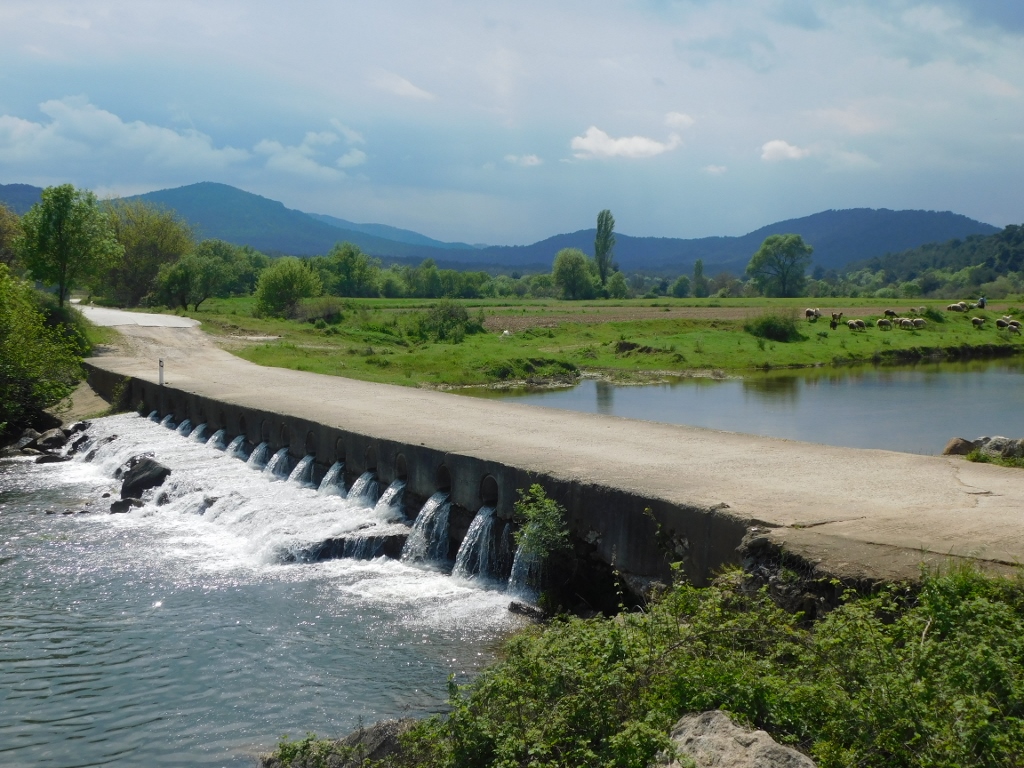 Seasonal watercourse at the time when there is water
Seasonal watercourse at the time when there is water
I’m using the word “seasonal” for the watercourse because although at the end of April 2023 this was quite a decent river, I have also seen photos in which the riverbed upstream from the bridge is completely dry! I presume that this happens during summer when the temperatures in Greece are very high.
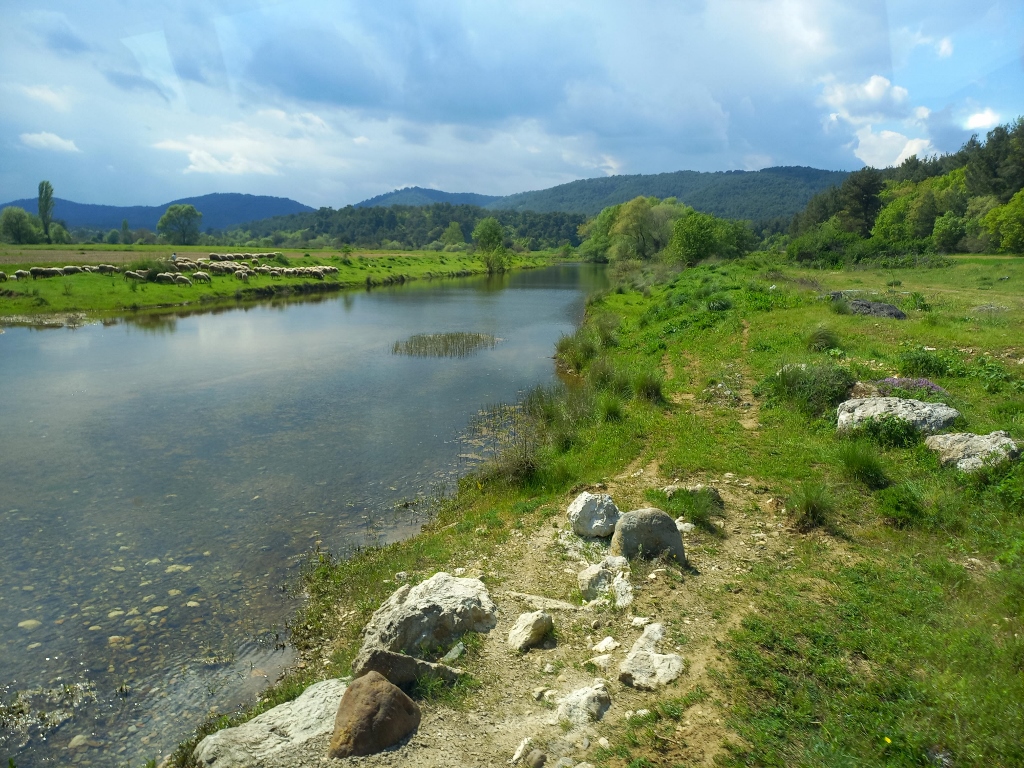 Enjoying the beauty of the river while it’s still there
Enjoying the beauty of the river while it’s still there
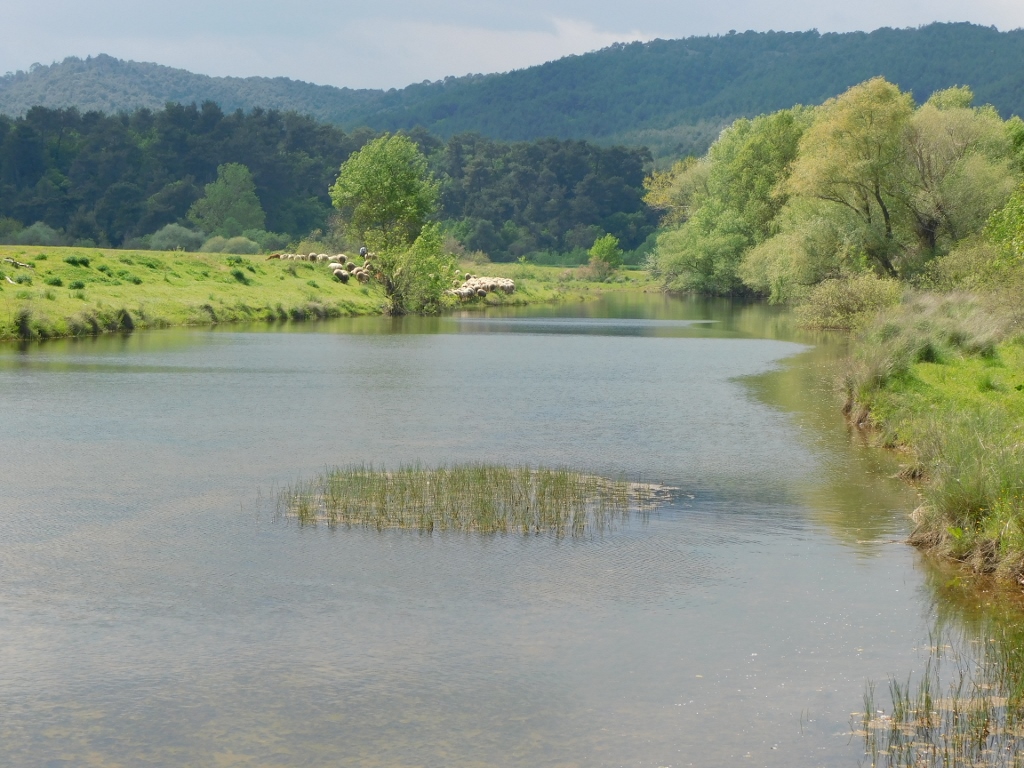 Enjoying the beauty of the river while it’s still there
Enjoying the beauty of the river while it’s still there
As I was concentrated on photographing the river that I liked very much, there was a whole flock of black vultures flying over us. With a hasty change of the focus I even managed to take a photo of the flock.
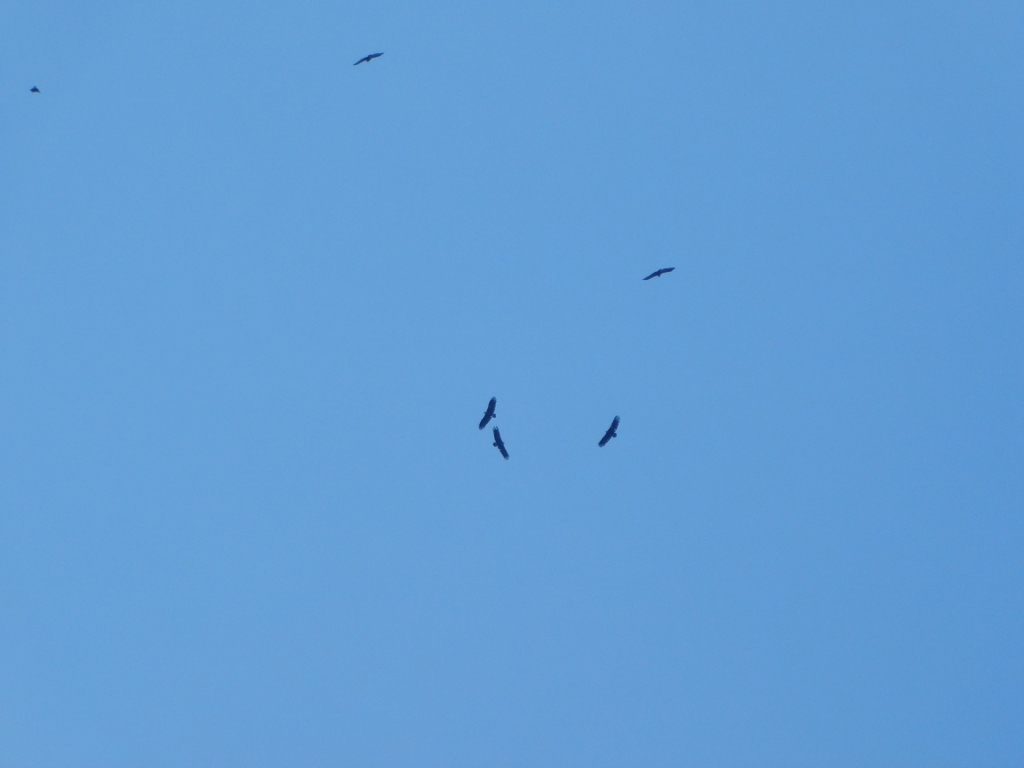 Flock of black vultures
Flock of black vultures
But, the focus of my photo-camera did not allow me to zoom in on the birds, so I moved my attention to the lower spheres. Thus I noticed a few specimens of arum or black calla (Arum palaestinum). It reminded me right away of a much bigger dragon arum (Dracunculus vulgaris) that I had seen in Crete (https://www.svudapodji.com/en/crete-8/). Later I checked this out and as it turned out my impression made sense, since both of these species belong to the Araceae family.
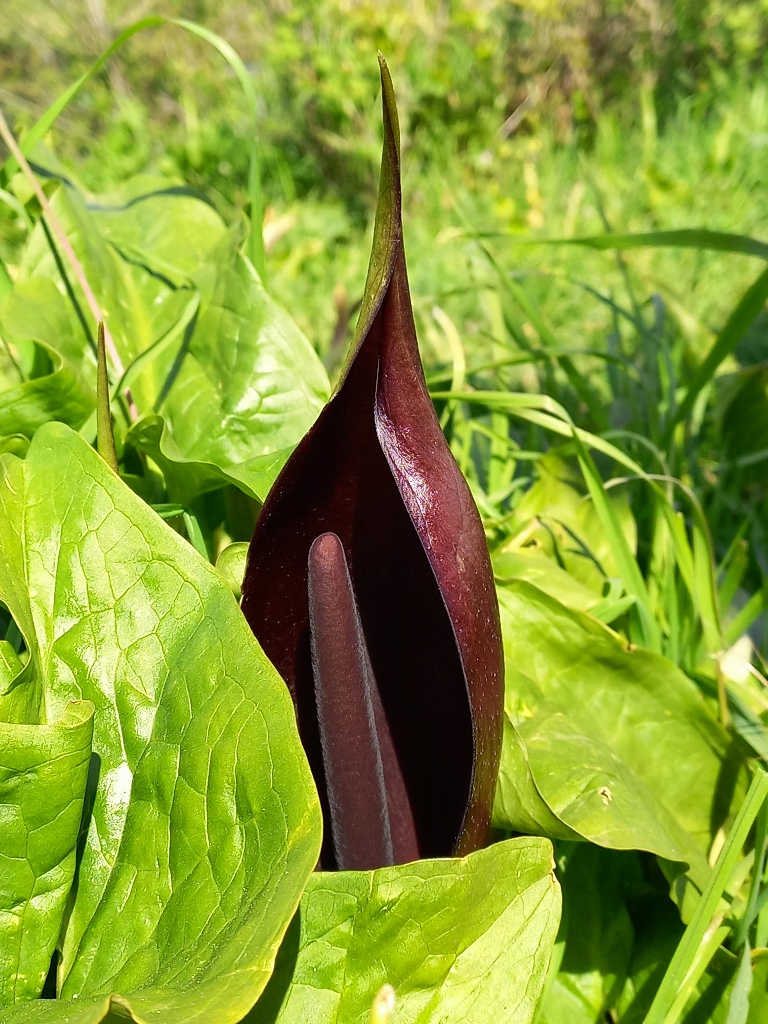 Arum or black calla
Arum or black calla
There was a whole myriad of other, beautiful and certainly picturesque details, but the whole area was primarily filled with vegetation of almost bright green colour.
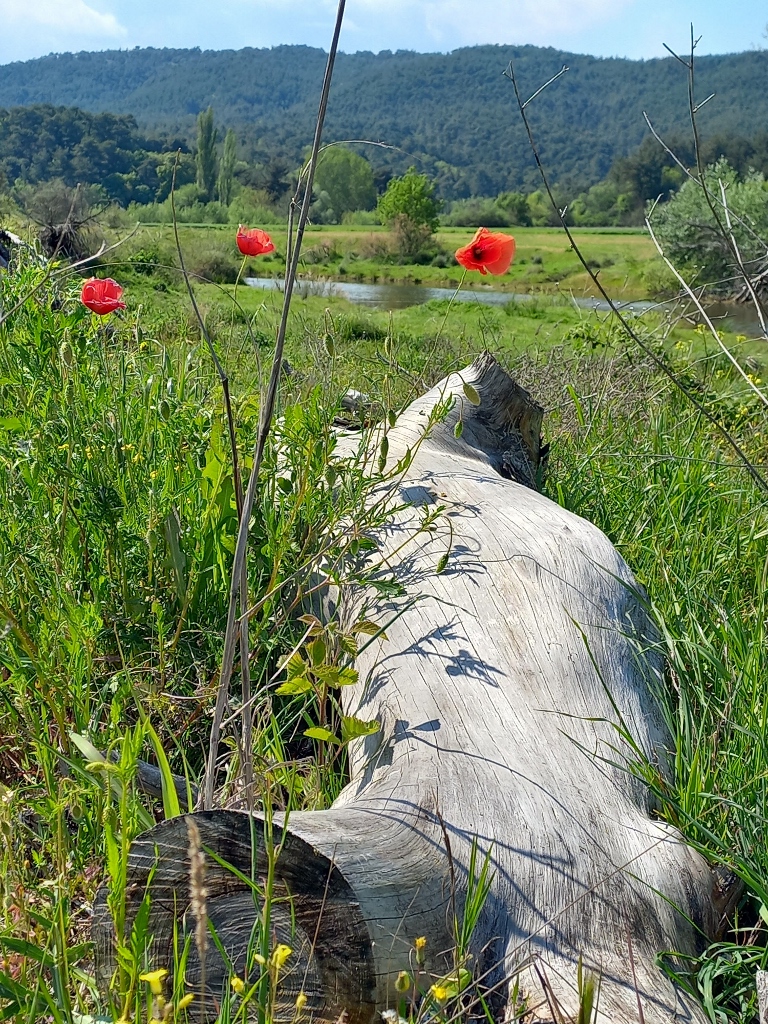 Stroll beside the seasonal river in Dadia, a detail
Stroll beside the seasonal river in Dadia, a detail
By the way, there was a lingering notion throughout the day that there could be showers. In the morning it was cloudy, but while we walked through Dadia Forest the sky cleared up. Even now, the Sun shone without any disturbances, but some rain-bearing clouds could still be seen in the distance. This did not bother me at all – moreover, I was actually glad that they were there, somewhere above the horizon, for they created in this way a dramatic dark background.
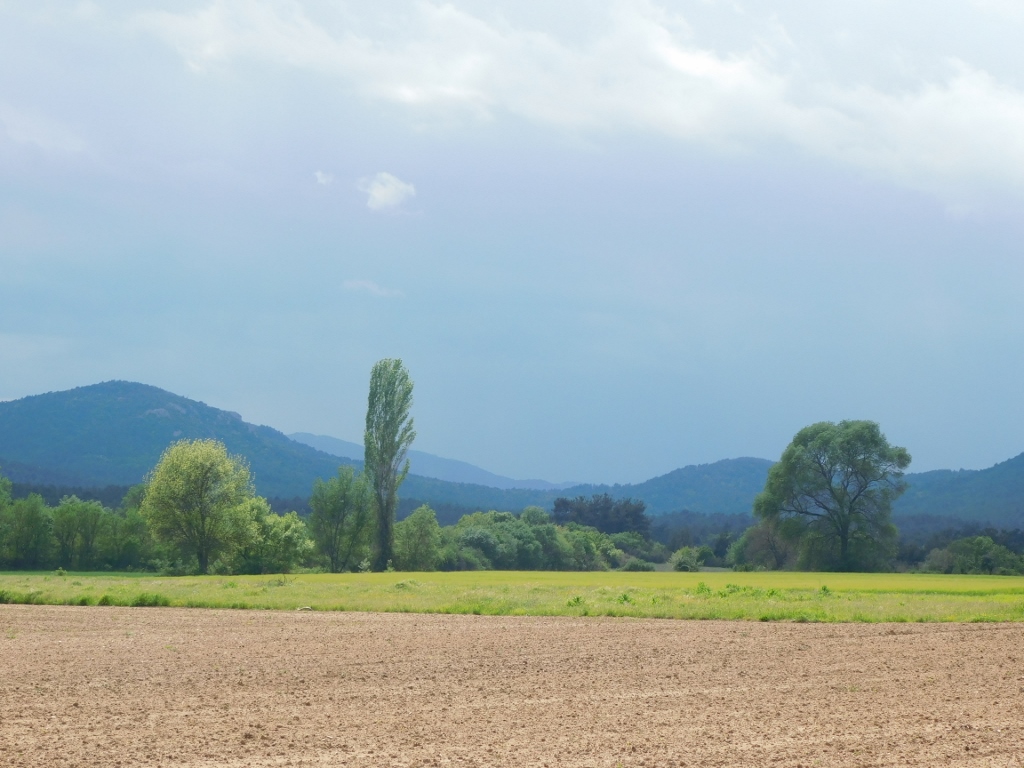 Stroll beside the seasonal river in Dadia, a detail
Stroll beside the seasonal river in Dadia, a detail
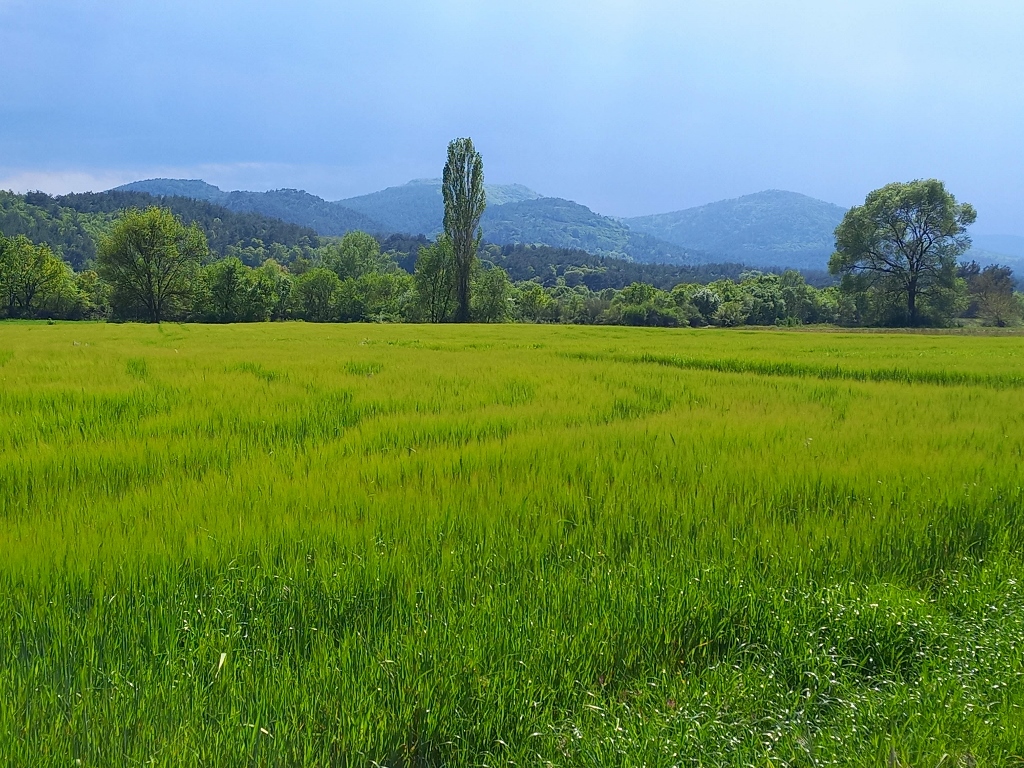 Stroll beside the seasonal river in Dadia, a detail
Stroll beside the seasonal river in Dadia, a detail
But, the purpose of this stroll was not to look at field poppies, fallen tree trunks and clouds, but rather birds and so the group equipped with binoculars kept on going for a short walk along the river, although this concrete place was not the nesting ground for large birds of prey. I think that the main idea was to enjoy in yet another beautiful area. And, as if they knew we were there, some black vultures reappeared in the sky and this time around I even managed to take some better photos of them.
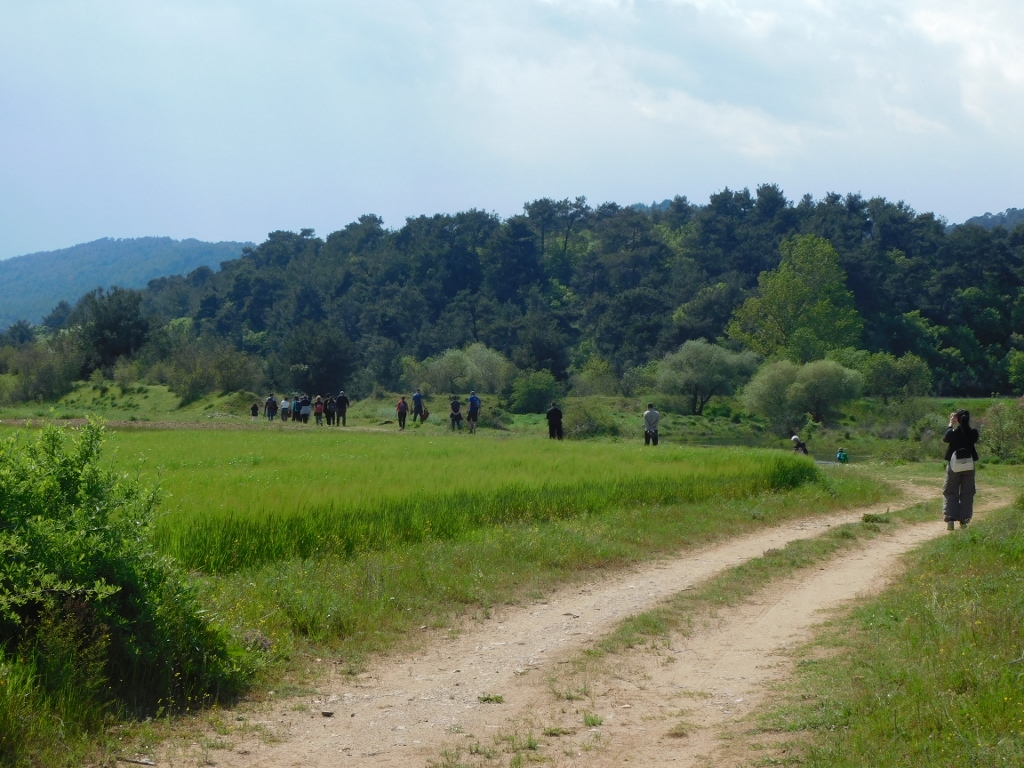 Stroll beside the seasonal river in Dadia, a detail
Stroll beside the seasonal river in Dadia, a detail
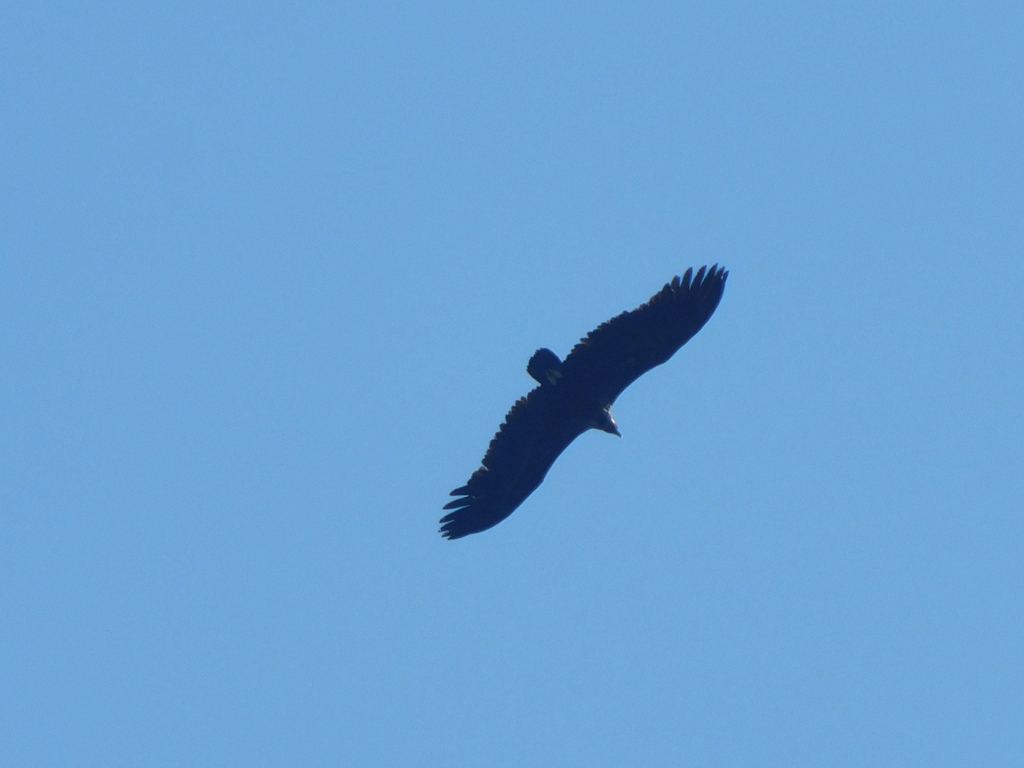 Cinereous or (Eurasian) black vulture
Cinereous or (Eurasian) black vulture
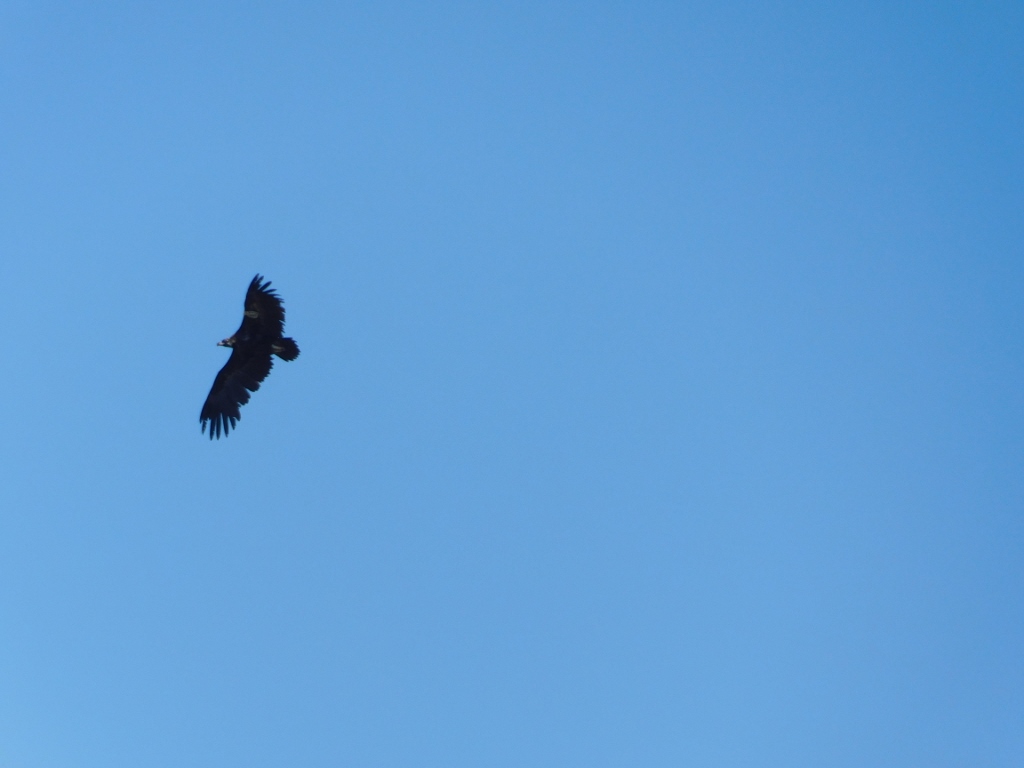 Cinereous or (Eurasian) black vulture
Cinereous or (Eurasian) black vulture
As I’ve already mentioned in the previous sequel to my travel stories, the cinereous or (Eurasian) black vulture (Aegypius monachus) is the biggest bird of prey in Europe. The length of its body goes up to 1.2 m, the wingspan up to 3.1 m, while the maximum weight can be as much as 14 kg, which makes it one of the heaviest flying birds.
When my neck became stiff and the arms started to shake in an attempt to zoom in onto birds flying high up above me and keep them in focus while trying to take photos with minimal trembling of the camera and holding my breath, I gave up. There was beauty at lower levels as well. To start with, there was this river that together with its surroundings did seem seductive.
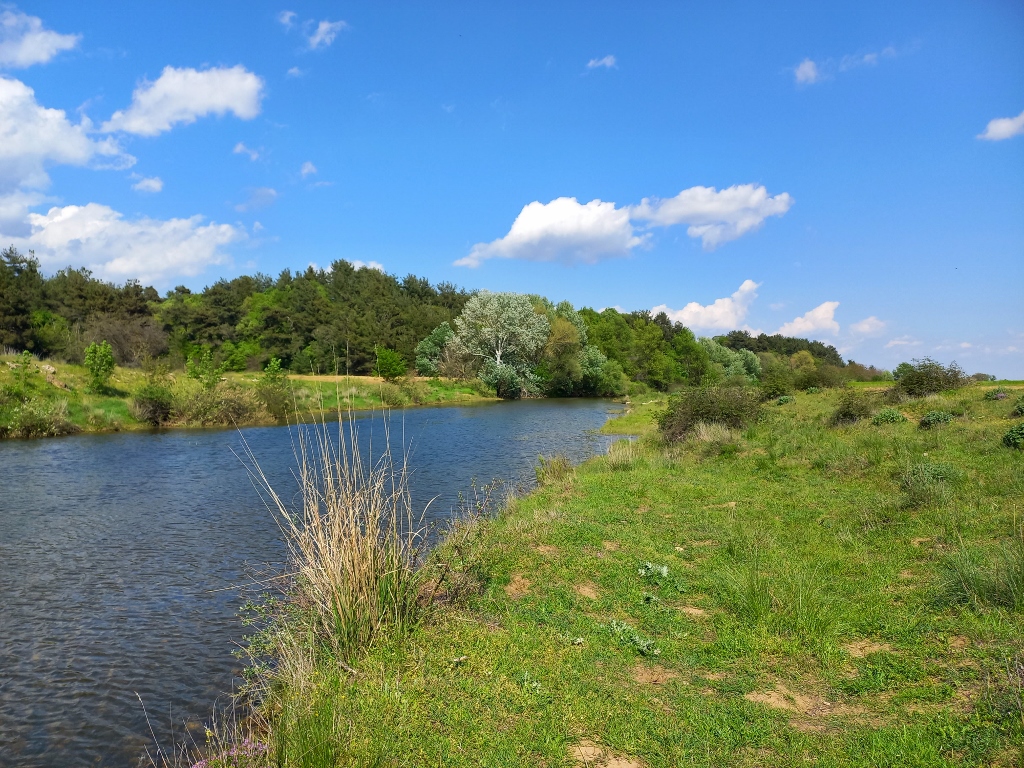 Seasonal river near a place called Dadia
Seasonal river near a place called Dadia
As it was the end of April, the temperature was not very high, but at some point, walking along the path, I reached a flock of sheep that, I think, did not share my opinion – they all tried to get into the shade under a tree. I found this quite cute, so I took a photo of them. Then I also waved and shouted “Kalimera!” to the shepherd that is barely discerned in the photo below. He kindly reciprocated the greeting and the hand-waving.
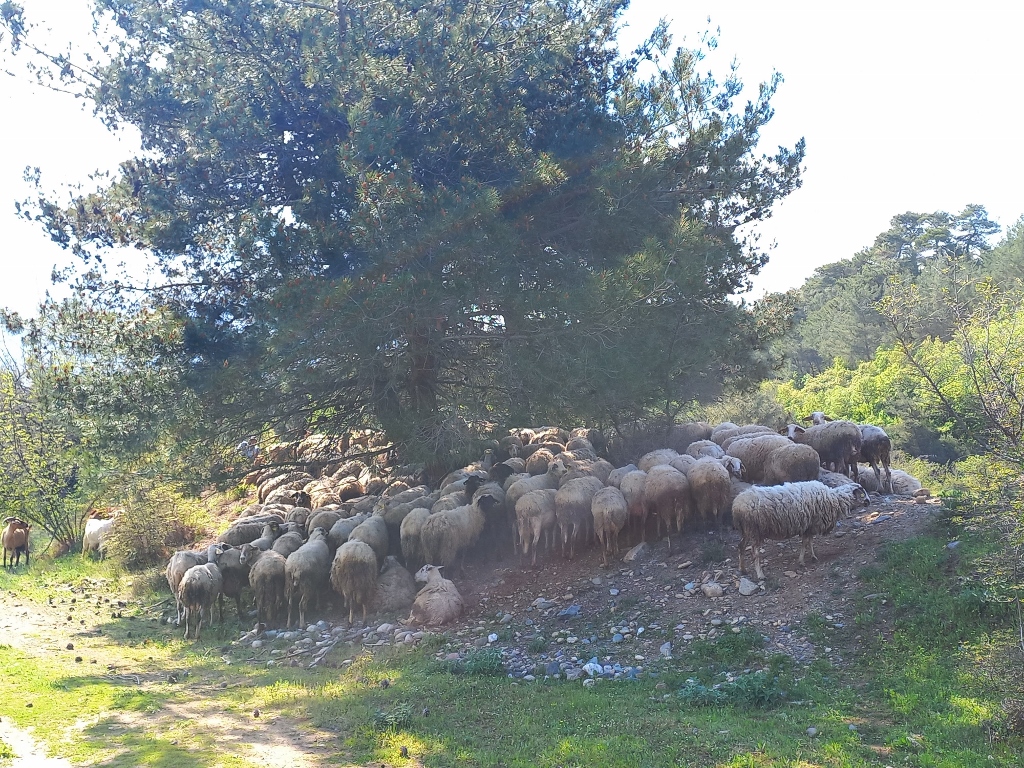 Flock of sheep that like to be in a shade
Flock of sheep that like to be in a shade
But, even at the lower levels, it was possible to see some birds. For instance, a nice corn bunting (Emberiza calandra) that adorned the top of a conifer tree close to the river.
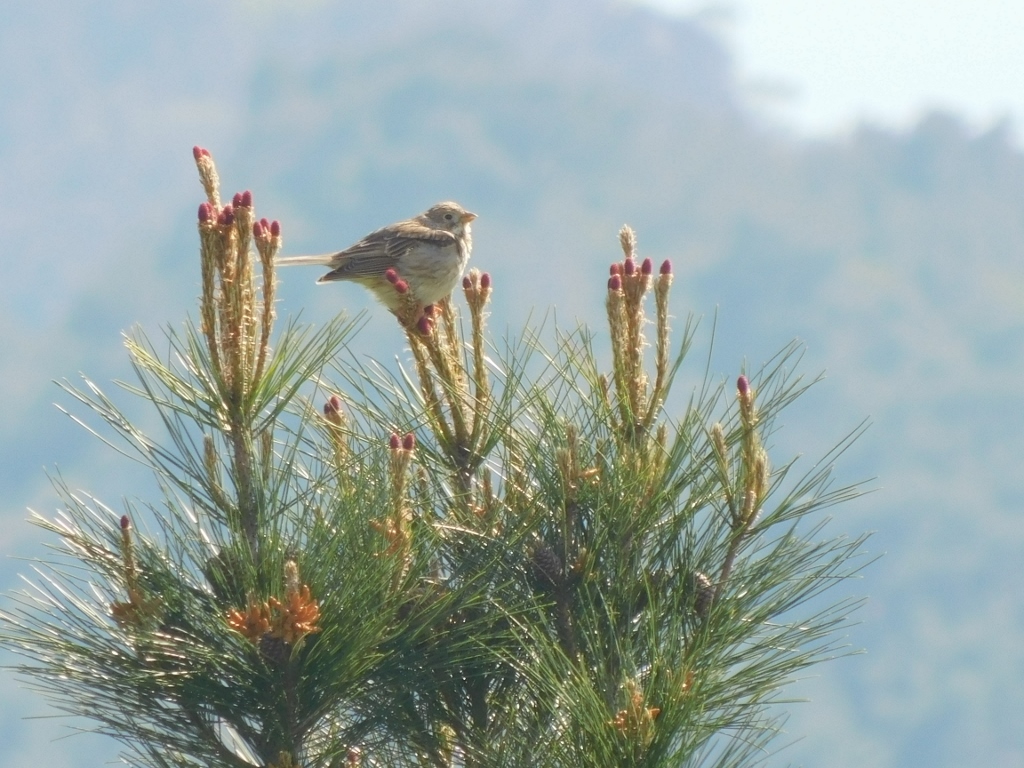 Corn bunting
Corn bunting
At some point we started to head back towards the bridge where our coach was parked. Since my neck and arms got normal again in meantime, I was ready to take advantage of a good position and take a photo of a black stork (Ciconia nigra) that also flew past above us.
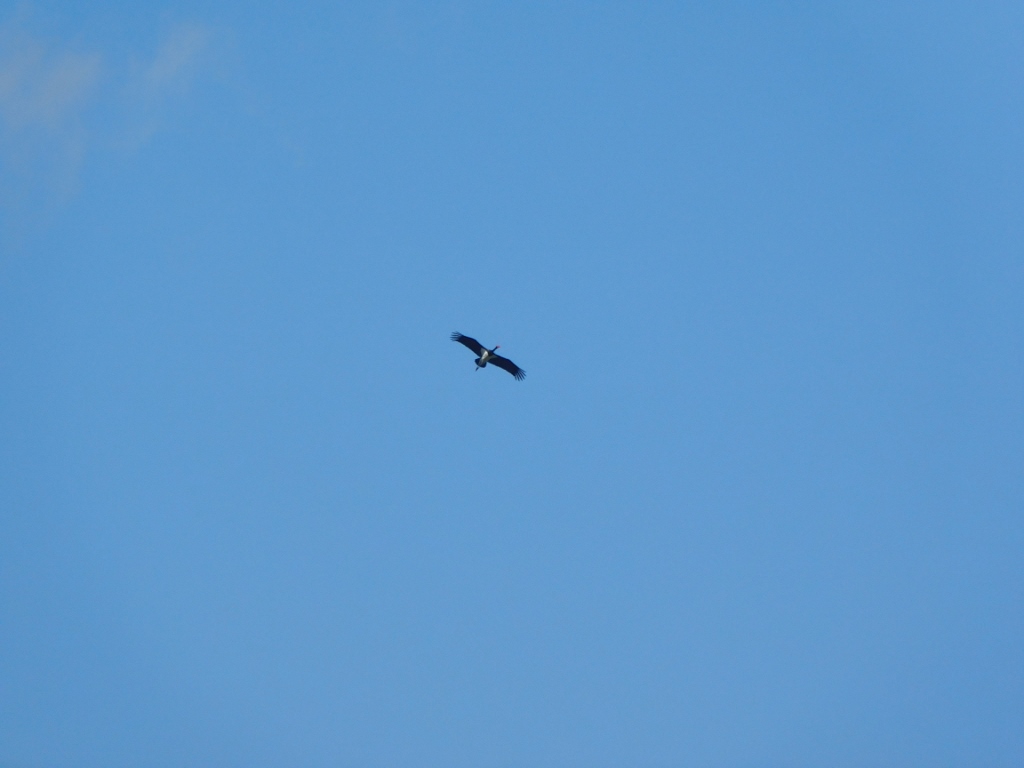 Black stork
Black stork
I was exceptionally content and could not stop uttering: “Nice. Nice.” In a calm way I was overwhelmed by great level of satisfaction and this found its expression through the words I was spontaneously and without any conscious intention saying. The only thing was that my friend Sonja had to listen to me the whole time.
But, I was not wrong in this, since the surrounding landscapes were truly magnificent, as well as this whole experience and both walks through nature that we went for on this day. Near the bridge I admired again at the beauty and cleanliness of the river. After all, this whole area was stunning, which is no wonder since this section, so to speak, is a “civilian” part of the territory in the far east of Greece that is surrounded by a national park.
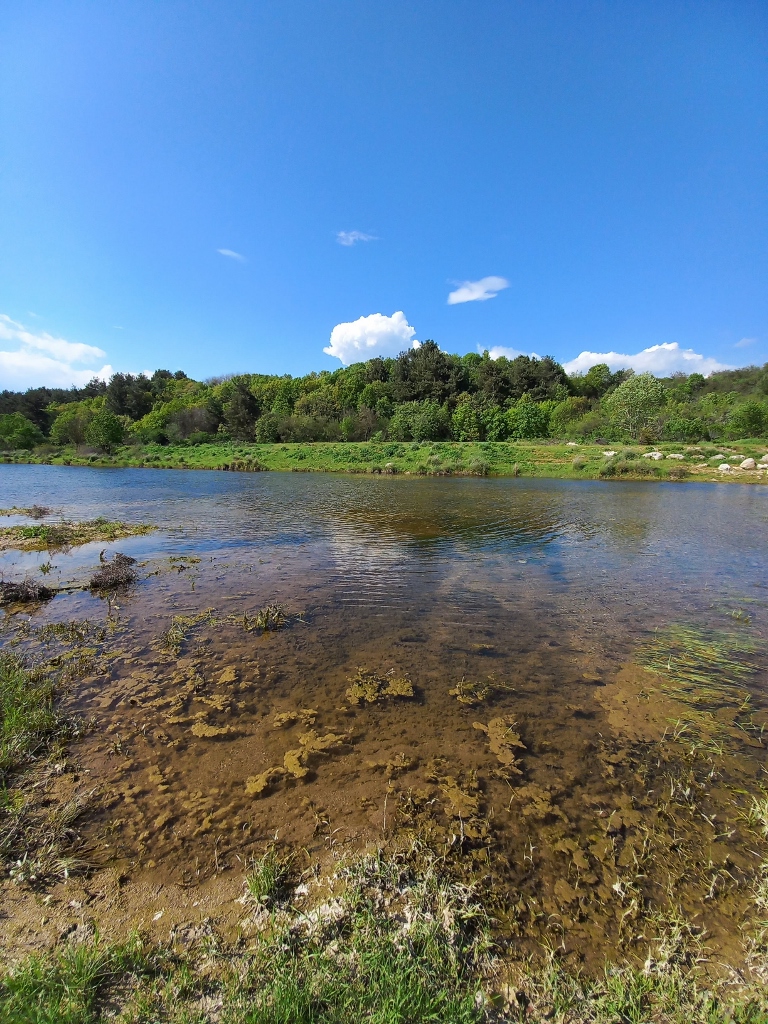 Spectacular nature in eastern Greece
Spectacular nature in eastern Greece
 Who could imagine that this river can dry out?
Who could imagine that this river can dry out?
When we got back into the coach, we drove for just a couple of kilometres to the centre of village Dadia where we got out again. I took the opportunity and photographed the local Church of St. Nicholas.
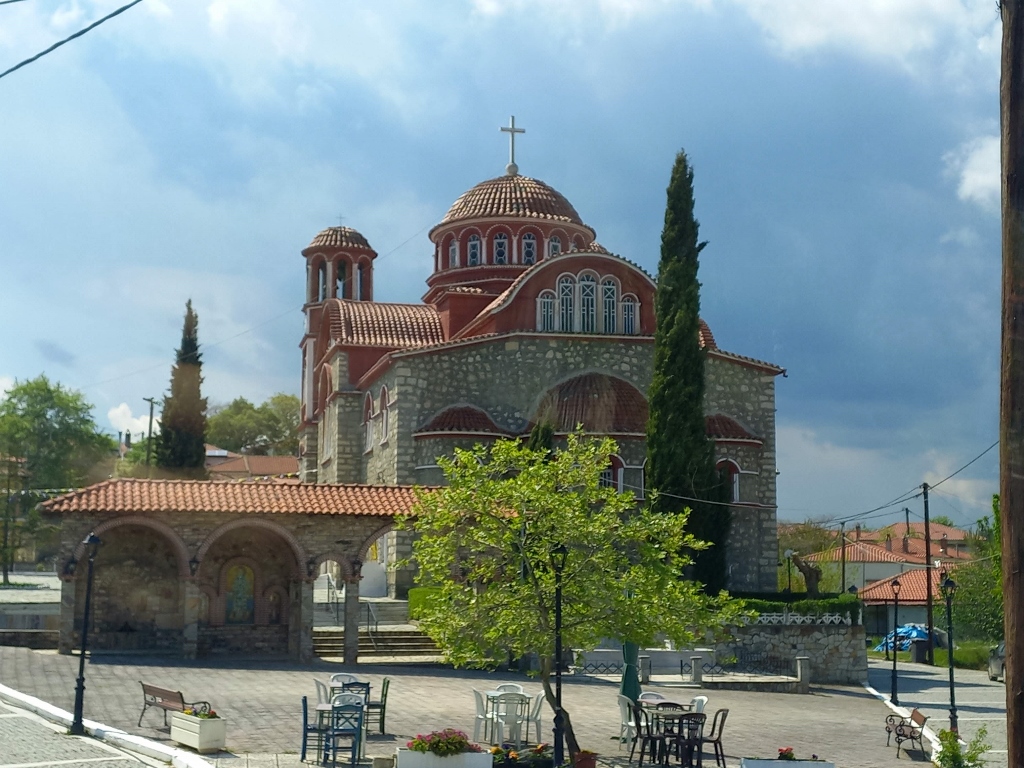 Church of St. Nicholas, Dadia
Church of St. Nicholas, Dadia
The reason why we got out of the coach again here was that after those two walks in nature we needed to replenish our energies a little. The best way for that was to go to a local tavern where we enjoyed great food. I know I missed taking a photo of a local cheese pie that was served as a starter, but I was far too impressed AND hungry to remember photography at that moment. Once my stomach got something to play with, it was all easier and hence there are photos of food.
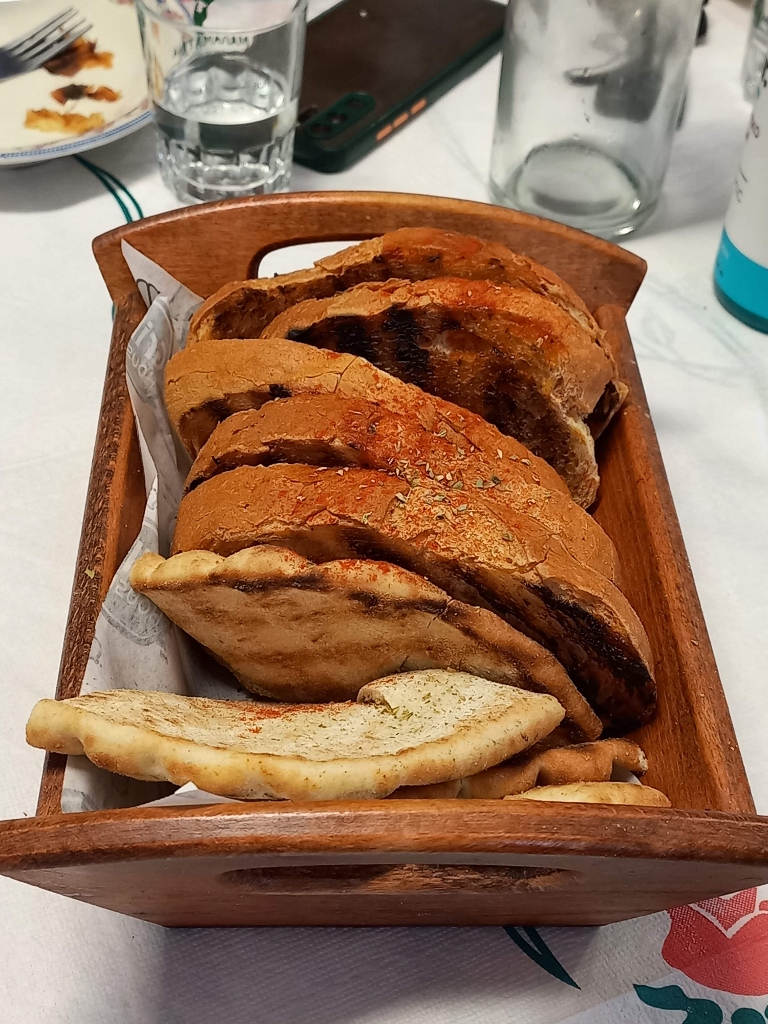 Part of lunch in Dadia
Part of lunch in Dadia
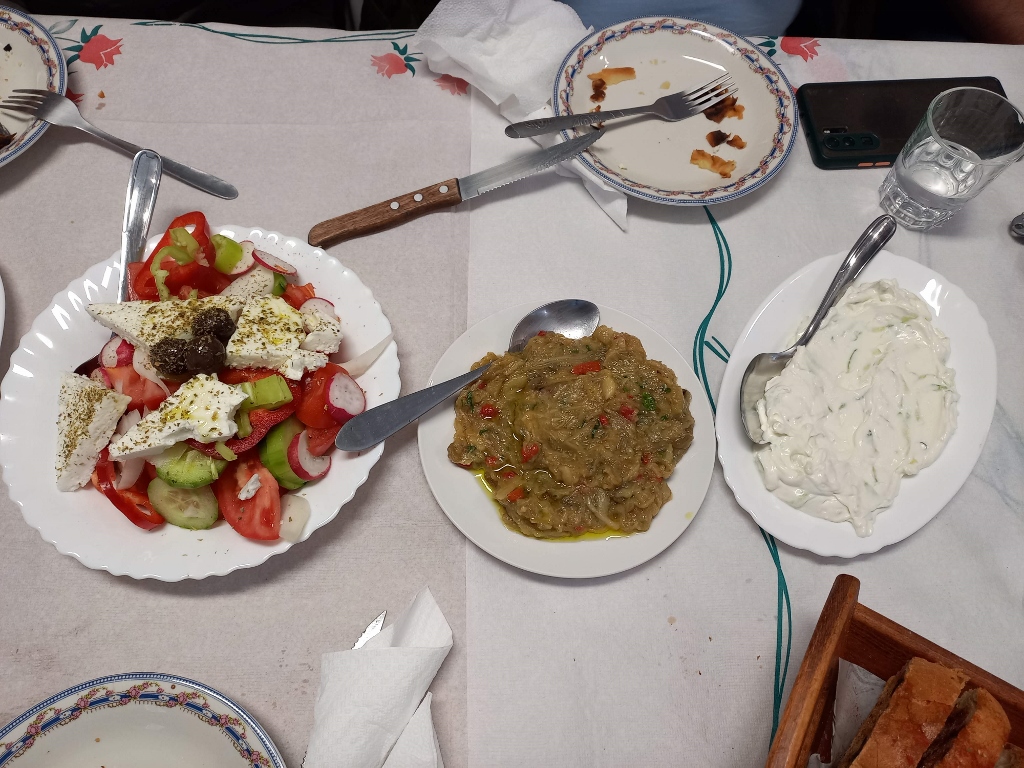 Part of lunch in Dadia
Part of lunch in Dadia
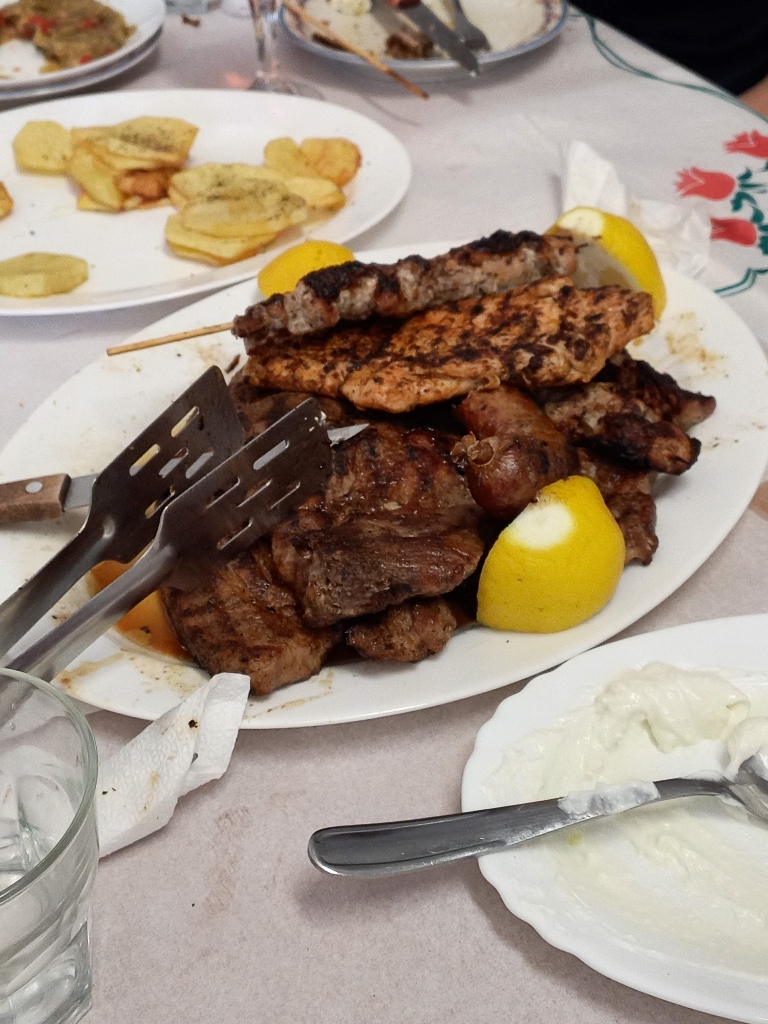 Part of lunch in Dadia
Part of lunch in Dadia
By the time we got to the dessert, which was spectacular, I was so full that I did not feel like taking photos. I love to eat, but I also love it when there’s moderation. Alas, this is not always the case.
After the great lunch in a joyful company, we parted from our hosts and then we returned to Alexandroupoli. Sonja and I agreed to go for a walk to the centre of the city. As the hotel was some 2.5 km away, this made sense. We needed to burn all those calories.
While we were walking and chatting, Sonja noticed a very interesting sculpture within a garden centre and I was delighted when she drew my attention to it. The sculpture was immediately named appropriately – Sea Venus in Red. In order to comprehend my delight, one should look at a recent travel story about my walk in Banja Koviljača and about Spa Venus in Blue (https://www.svudapodji.com/en/banja-koviljaca-4/).
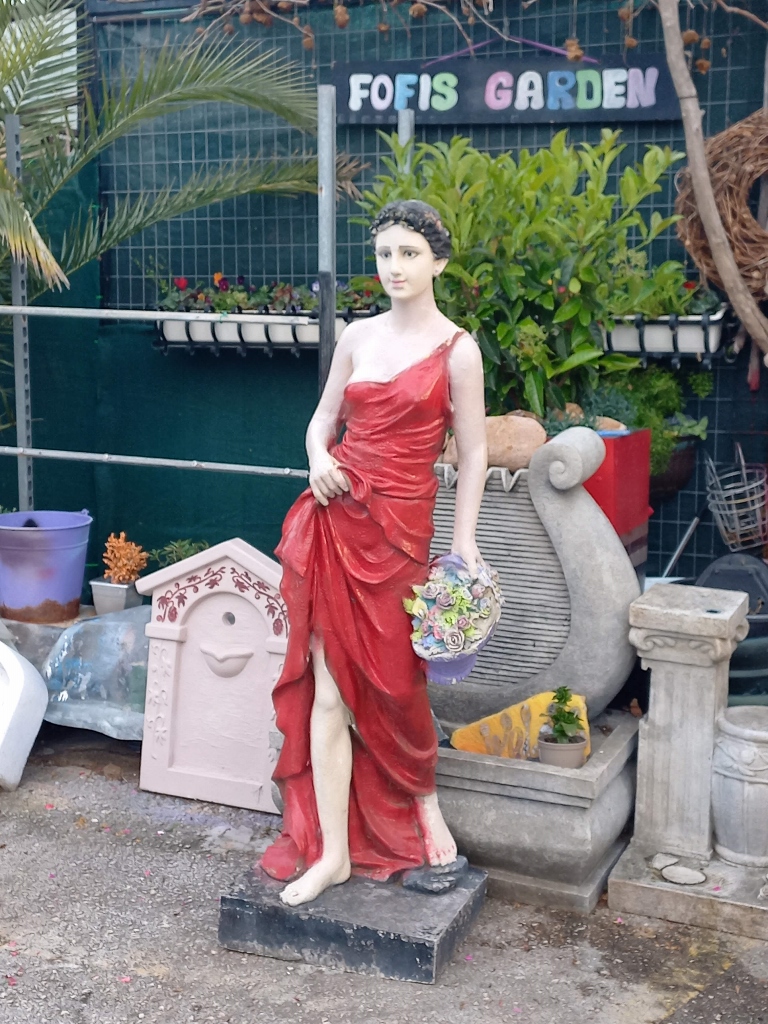 Sea Venus in Red
Sea Venus in Red
Having approached the centre of the city, Sonja and I reached a promenade by the sea and then we sat on a bench there, simply gazing towards the horizon. The day was getting close to its end.
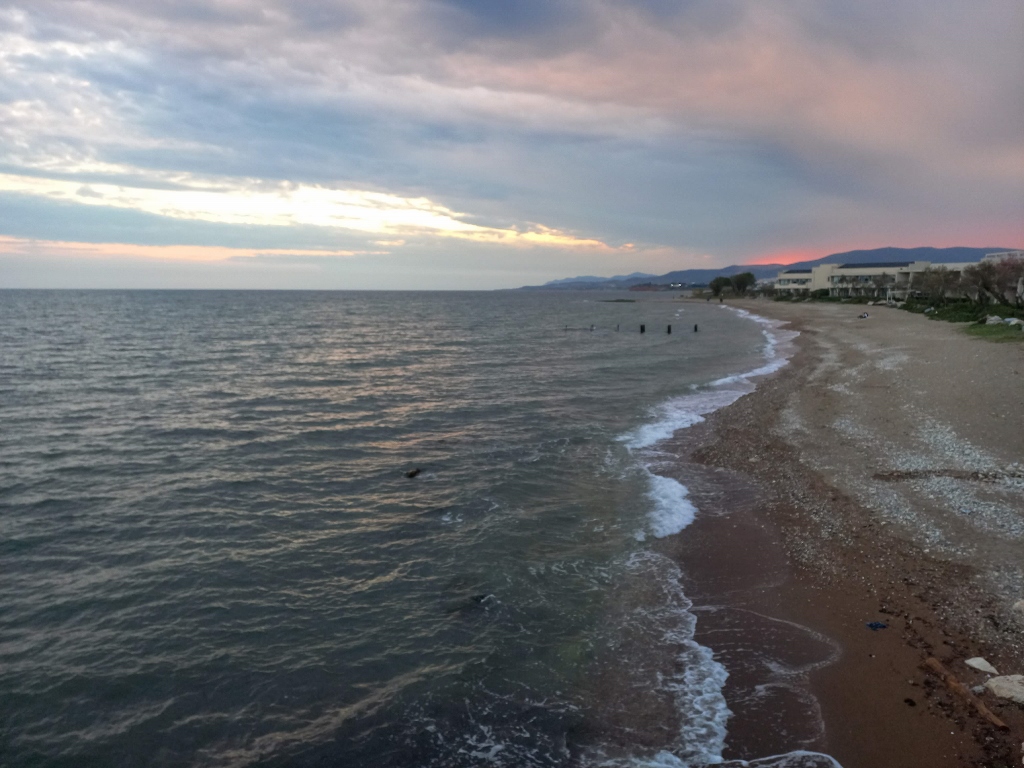 Alexandroupoli, a detail
Alexandroupoli, a detail
Alexandroupoli is the biggest city in the Greek region of Eastern Macedonia and Thrace situated in the far east of the country, only some 40 km from a border crossing with Turkiye. The city has certainly developed to a large degree thanks to the road and maritime traffic between Greece and Turkey, but people have inhabited this region already since the Neolithic period. The city itself started to form at the beginning of the 19th century when it was a part of the Ottoman Empire and in the period of the two Balkan wars and WWI, in other words at the beginning of the 20th century, the city moved from the Greek into the Bulgarian hands and then back into the Greek ones, several times. Finally, in 1920, the city formally joined Greece and in that same year it changed its name from Dedeağaç to Alexandroupoli. The name was given after King Alexander of Greece (1893-1920), who briefly visited here in July 1920 only to fall ill through a mishap and die very young a couple of months later.
Alexandroupoli is an interesting city, although I actually had no time to do any sightseeing around. According to what I have read, there are in its vicinity, for instance, a popular thermal spa, one of the most important in Greece and famous for its therapeutic properties, as well as Polyphemus Cave (Polyphemus was a famous cyclops from Greek mythology) which is said to be the dwelling of this cyclops, while it was in fact used during the Neolithic era.
During this end-of-the-day walk, Sonja and I, however, did manage to see one of the symbols of the city and that is the Lighthouse of Alexandroupoli that is located, if I can put it this way, right in the middle of the promenade by the sea.
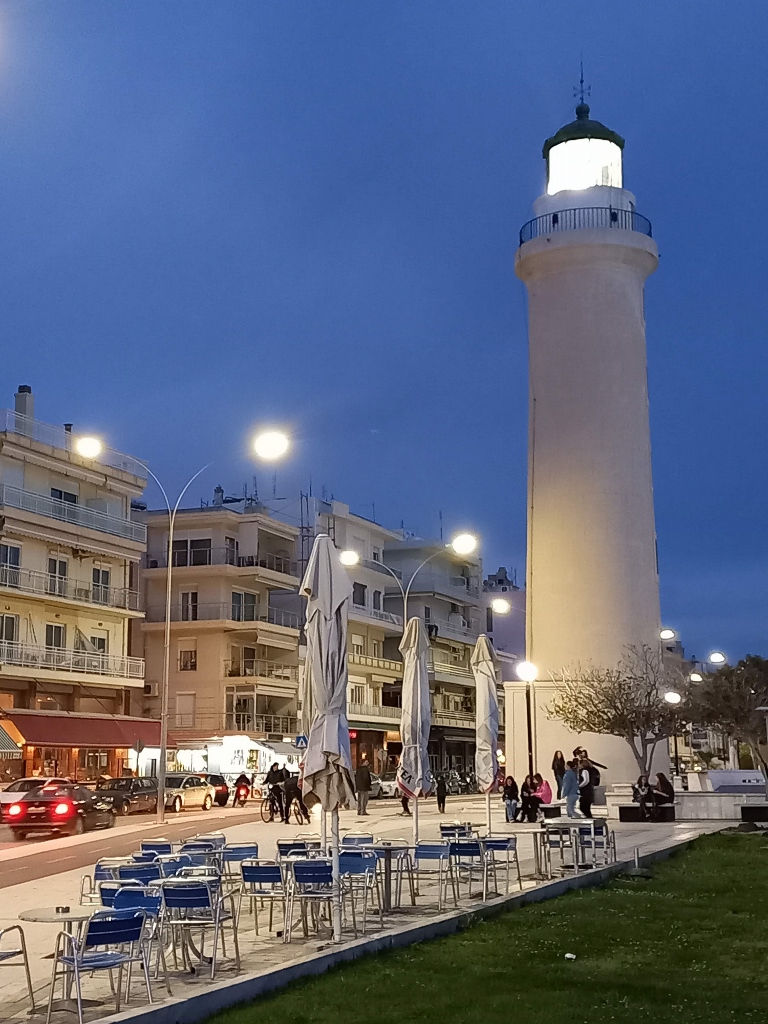 Lighthouse of Alexandroupoli
Lighthouse of Alexandroupoli
The lighthouse was built in 1850 and it started to operate in 1880. It is 18 m high, but as it is positioned on the promenade that is raised above the level of the sea, the lighthouse is actually 27 m a.s.l. It is quite visible from the sea, while its light beam can reach the distance of around 44 km.
Below the level of the promenade in the direction of the sea, there is an amusement park and in addition to popular cafes and restaurants that are omnipresent throughout the city, at the promenade I also noticed monuments to spouses Domna Visvizi and Chatzi Antonis Visvizis, Greek revolutionaries from the first half of the 19th century.
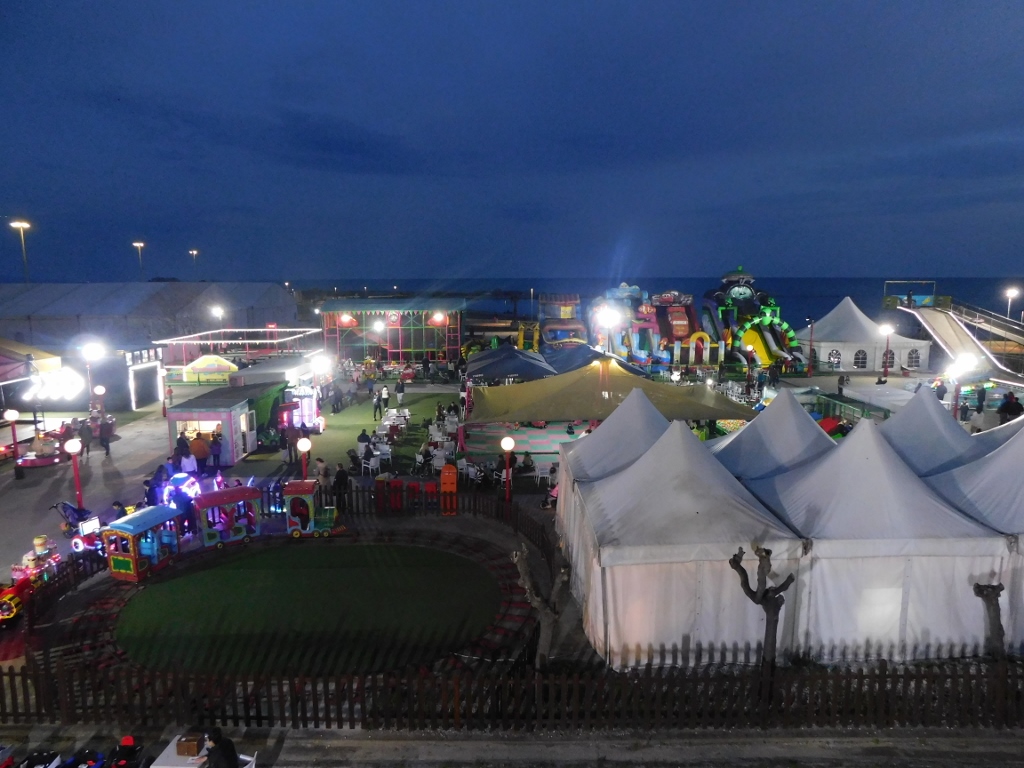 Alexandroupoli, a detail
Alexandroupoli, a detail
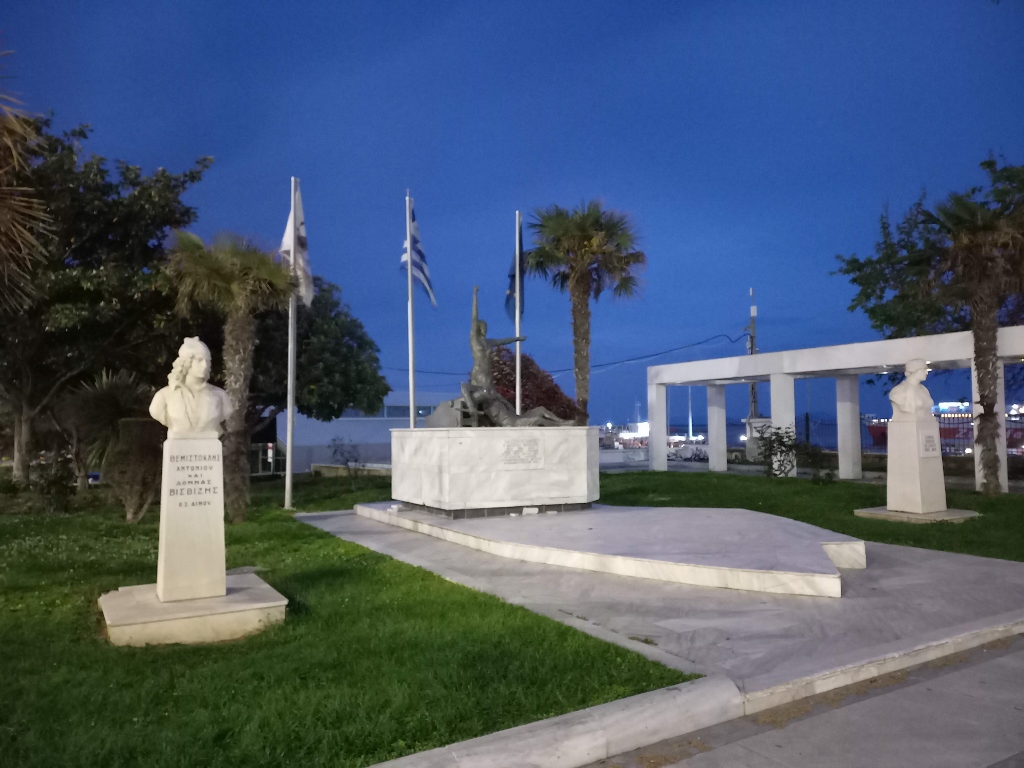 Alexandroupoli, a detail
Alexandroupoli, a detail
Sonja and I started our return back to the hotel from here and along the way we came across a popular party in a park. There was a large number of young people who danced a traditional dance and I really enjoyed seeing them. I am always delighted when I see young people who are not just sitting in cafes staring at their phones and not talking with anybody. It was especially nice that these young people knew quite well their tradition in the shape of the dance which they did with proficiency. I even made a short video:
After this, Sonja and I went back to the hotel where we had enough time to rest and sleep well before continuing with our journey the next day.
One of the places in the near proximity of Alexandroupoli that is exceptionally important is the delta of the Maritsa river that is called the Evros in Greek and it is precisely this Greek name that is most often used in the name of this delta.
With its length of 480 km, the Maritsa river that starts in the Rila Mountains is the longest river of the Balkan peninsula (in terms that it flows solely within the region). In its lower course, with a very small number of aberrations, it constitutes the border between Greece and Turkiye. For us in Serbia, the river is important because of the Battle of the Maritsa fought in 1371 between the Serbian and the Ottoman Empire forces. The Serbs lost the battle and this was where King Vukašin (Mrnjavčević), the father of the legendary Serbian hero, Prince Marko, was killed.
What made the Maritsa river important for this journey of mine was its delta or, to be more precise, the Evros Delta National Park. Having explained the difference between the use of the names Maritsa and Evros, I will continue to use the latter in the rest of the text, as it is also used in the official name of the NP.
This area covers the surface of around 188 sq. km and it is one of the most important wetlands in all of Europe, with several sub-types of habitats. Over time, a total of 28 amphibian and reptile species have been recorded here, as well as 40 species of mammals, 46 species of fish and over 300 species of plants. However, what stands out in particular is the large number of birds that dwell here – as many as 324 species (in some of the materials I came across a figure of 317). Some of them certainly live here permanently, but there are also many migrating birds that spend winters here or just use the area during their migration. Some of them are endangered, too. Because of all of this, the surface area of 95 sq. km has been included into the list of protected wetlands and hundreds of thousands of birds live here throughout the year.
On the second day of my stay in Greece, I came to the Evros Delta National Park with the group that I travelled with. The plan was to spend only a relatively short period of time here, since we had to continue with our trip later on.
 The Evros Delta
The Evros Delta
Already at the place where we got out of the coach we could notice a couple of interesting bird species. These were the black-winged stilt (Himantopus himantopus) and the glossy ibis (Plegadis falcinellus). Personally, I was delighted, especially because I managed to attain never-before-seen levels of proficiency in using my photo-camera.
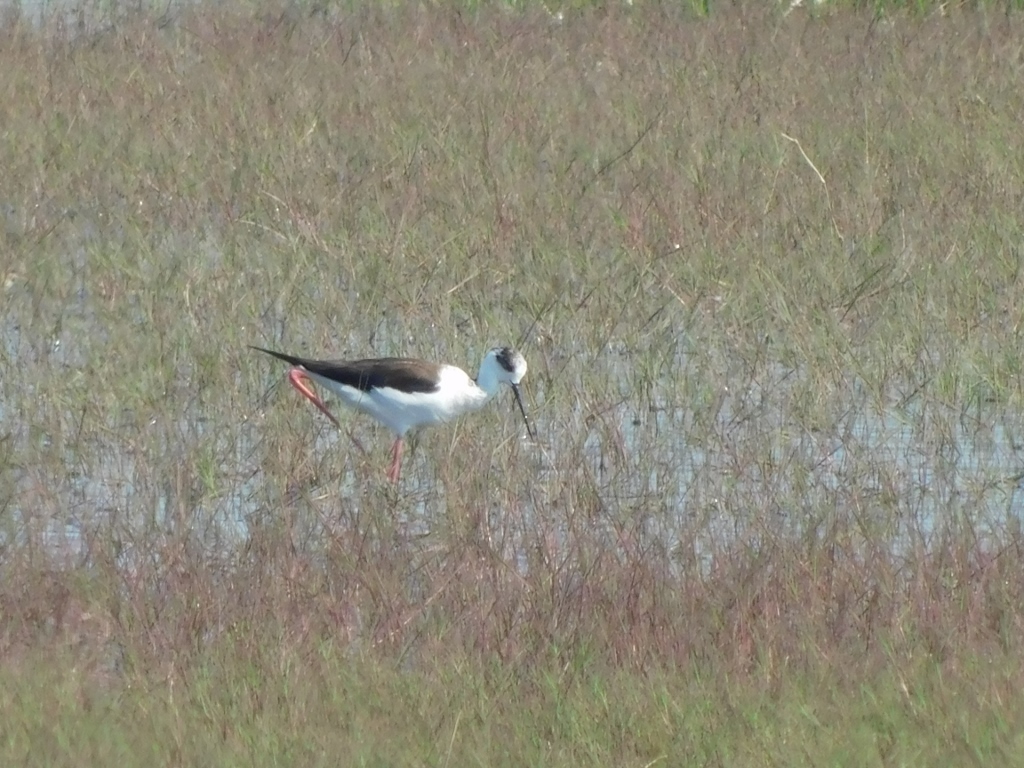 Black-winged stilt
Black-winged stilt
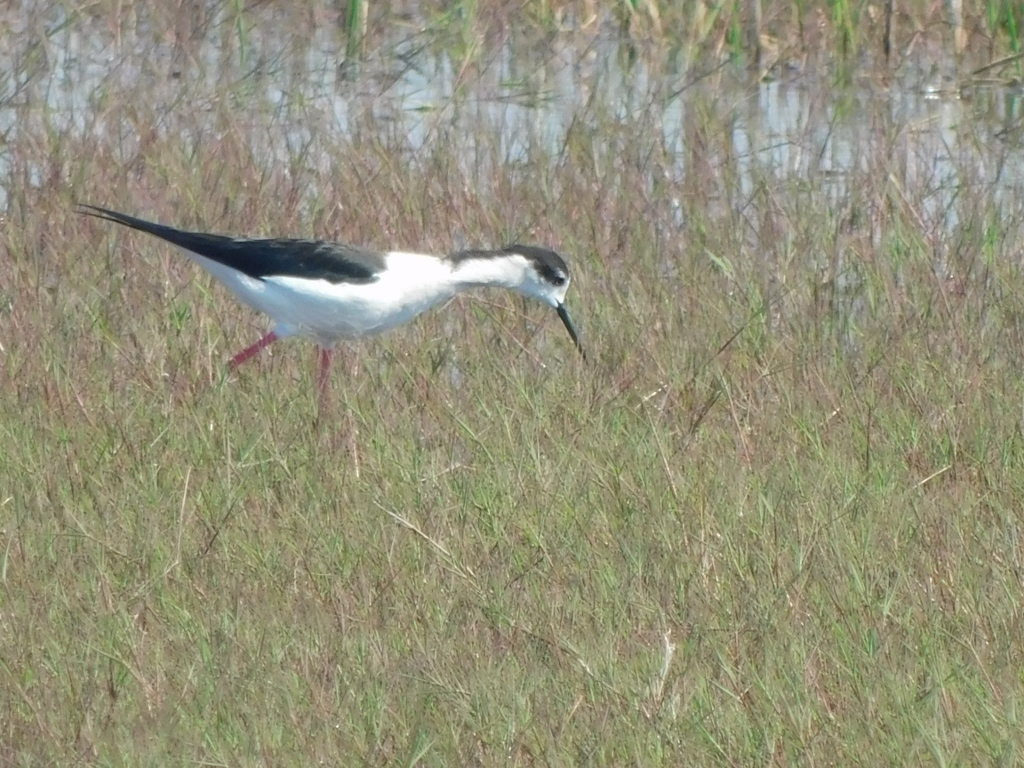 Black-winged stilt
Black-winged stilt
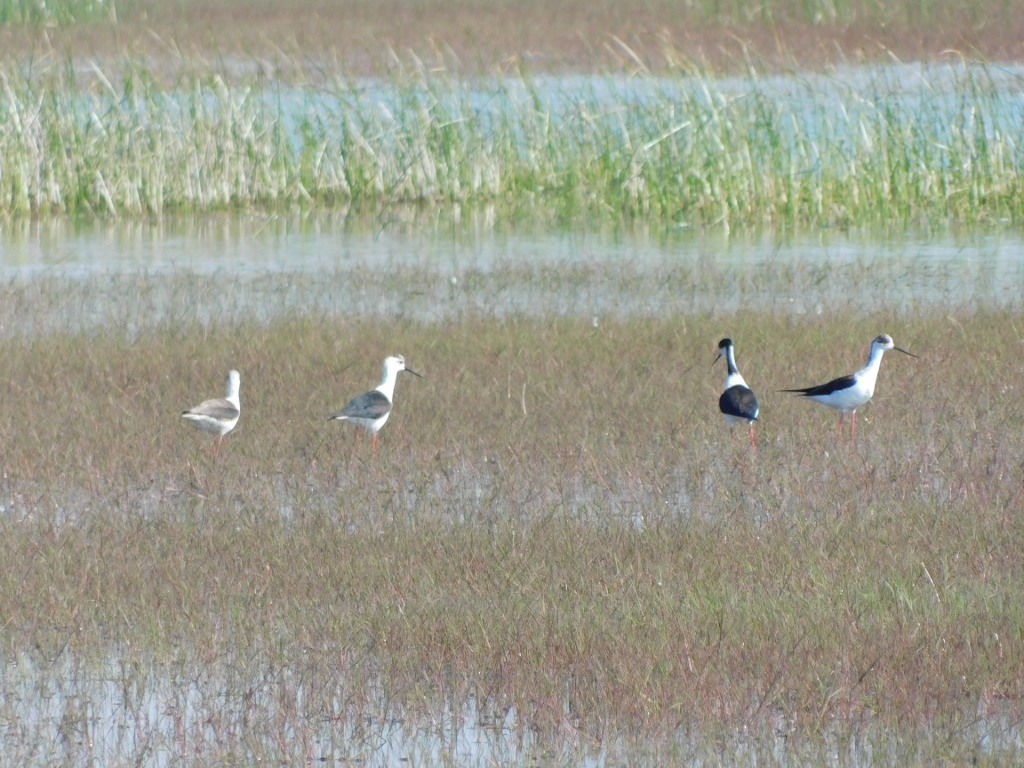 As many as four black-winged stilts in the focus
As many as four black-winged stilts in the focus
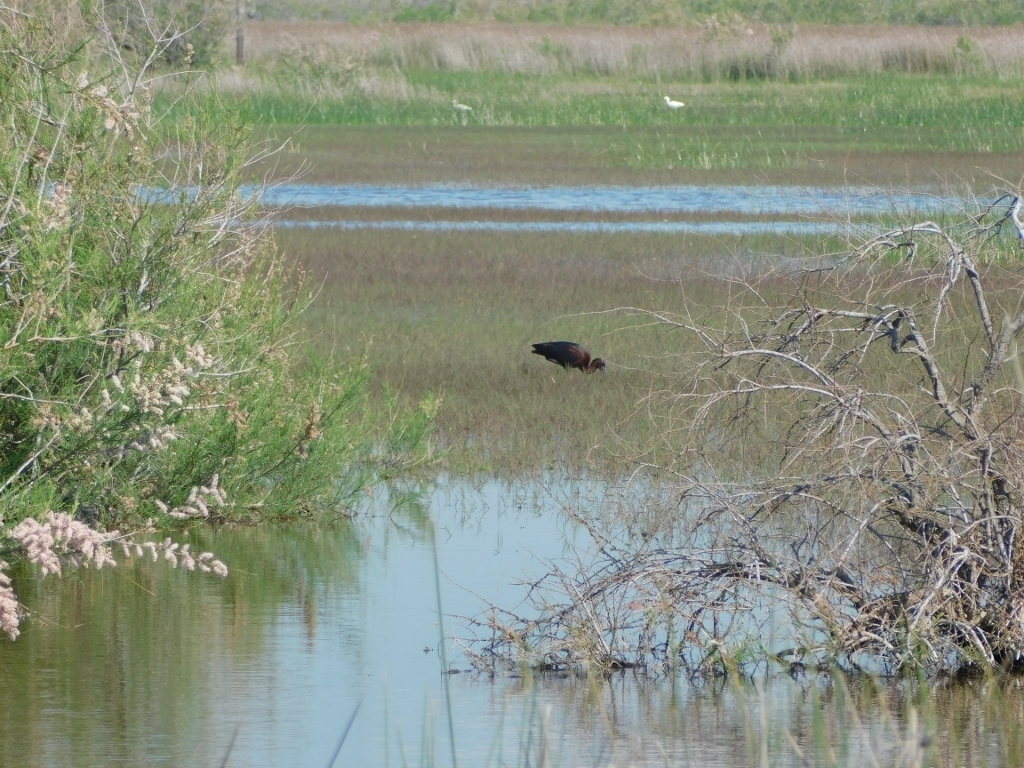 What is hidden in this part of the swamp – a glossy ibis
What is hidden in this part of the swamp – a glossy ibis
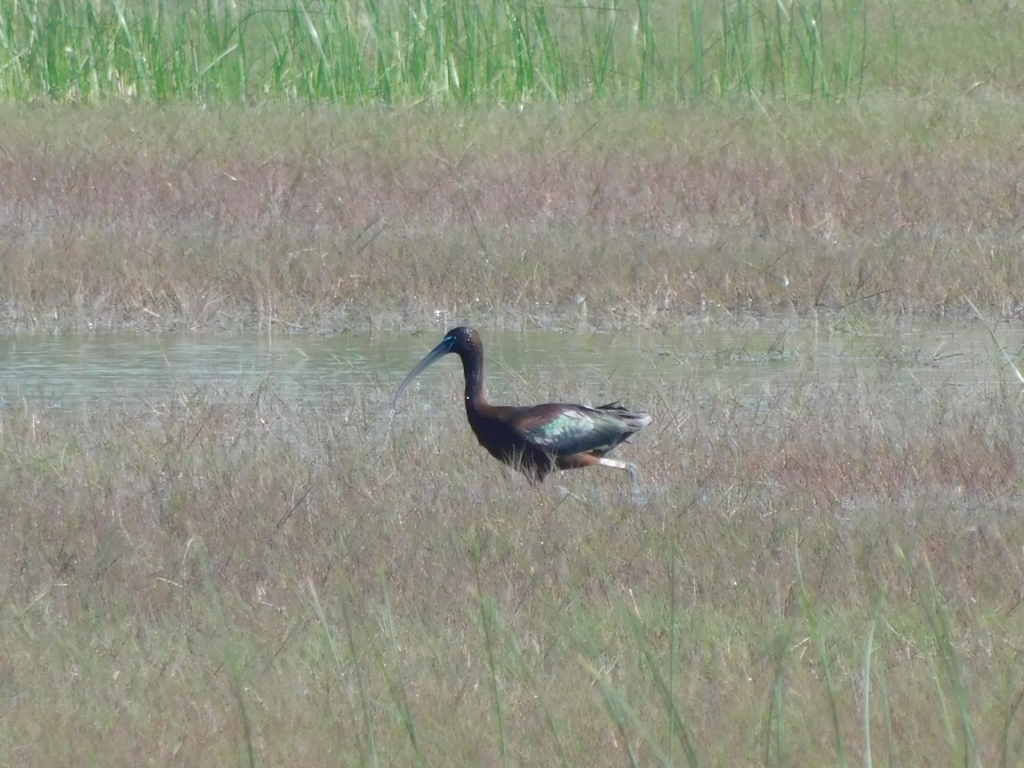 Glossy ibis
Glossy ibis
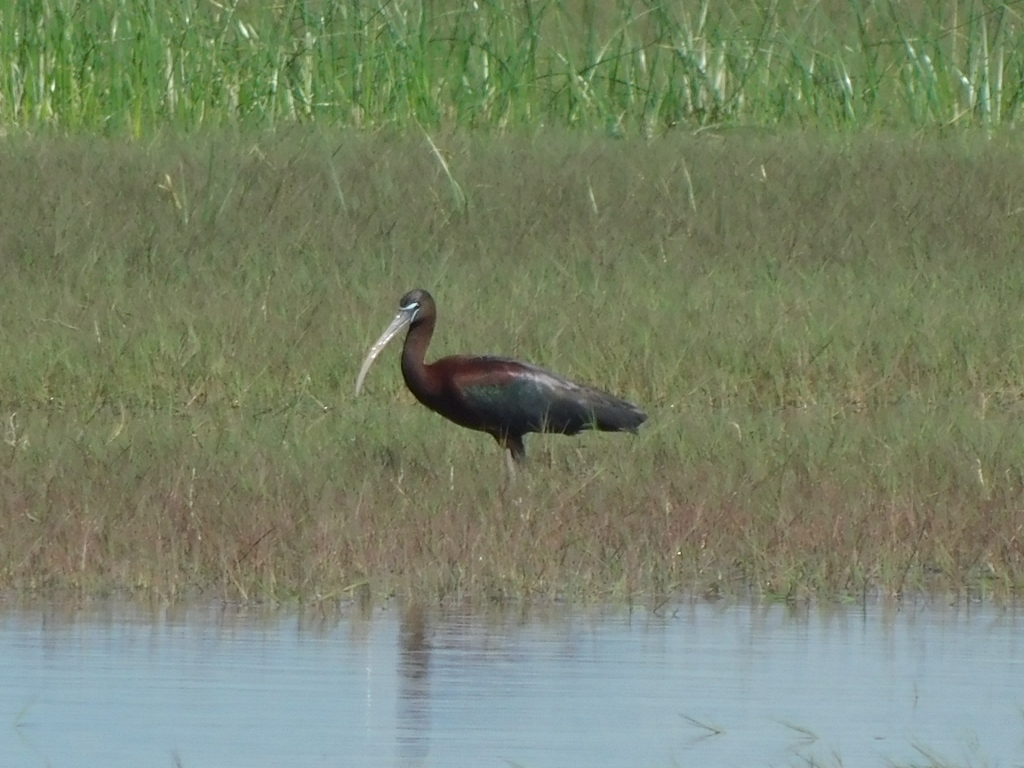 Glossy ibis
Glossy ibis
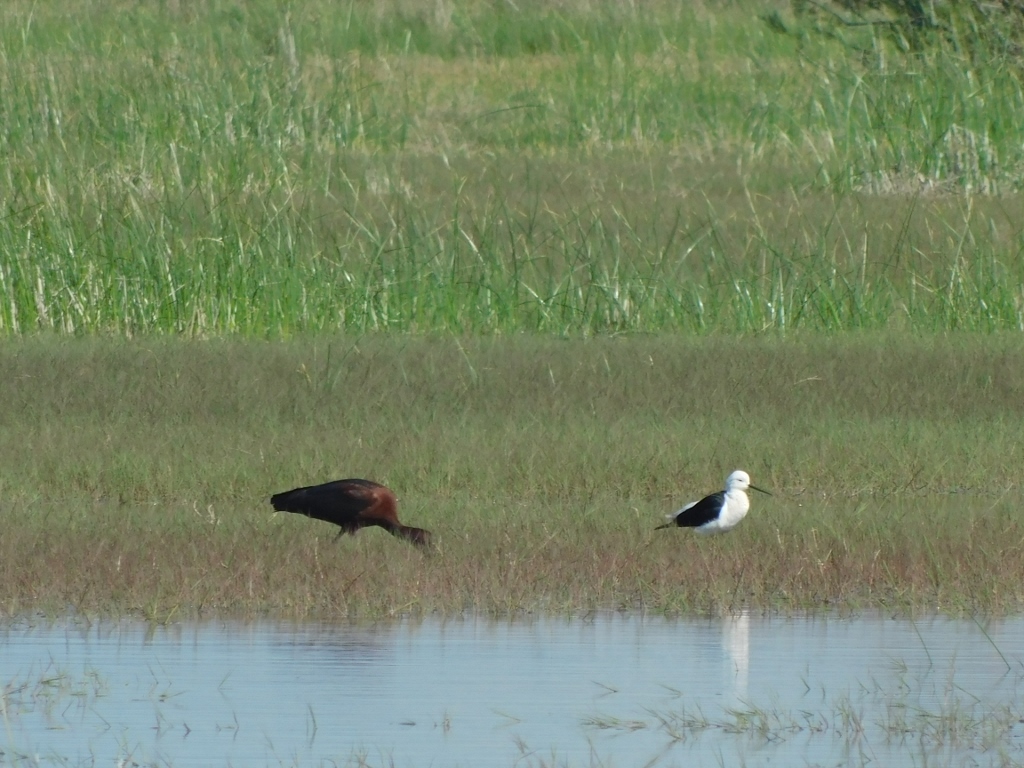 And now a group portrait: a glossy ibis and a black-winged stilt
And now a group portrait: a glossy ibis and a black-winged stilt
A western yellow wagtail (Moracilla flava) also came down nearby, but for a very short while. Somewhat later, in a couple of other places, birds belonging to this species also came quite near me, but by the time I would turn on the camera and try to zoom in on them, they would already fly away. So, here is the only photo that was “successful.” I’m happy.
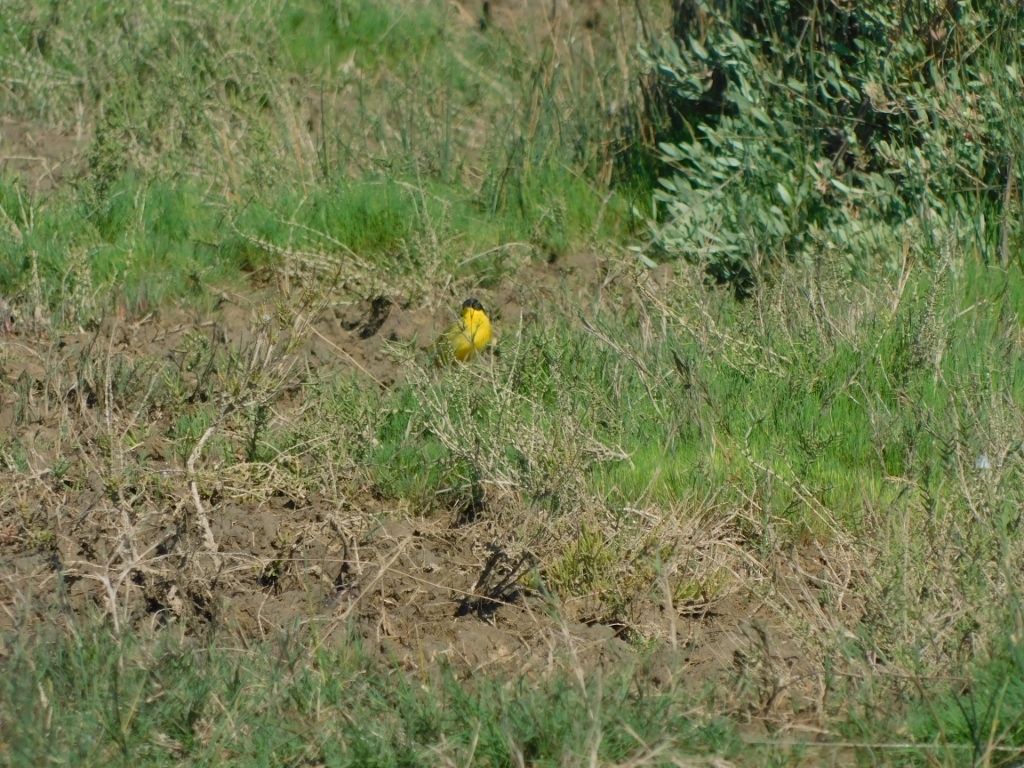 Western yellow wagtail
Western yellow wagtail
Then we all continued with the walk, but in a rather dispersed manner, albeit practically all in the same direction. That was not hard at all and one could not get lost. At least not in this part of the delta.
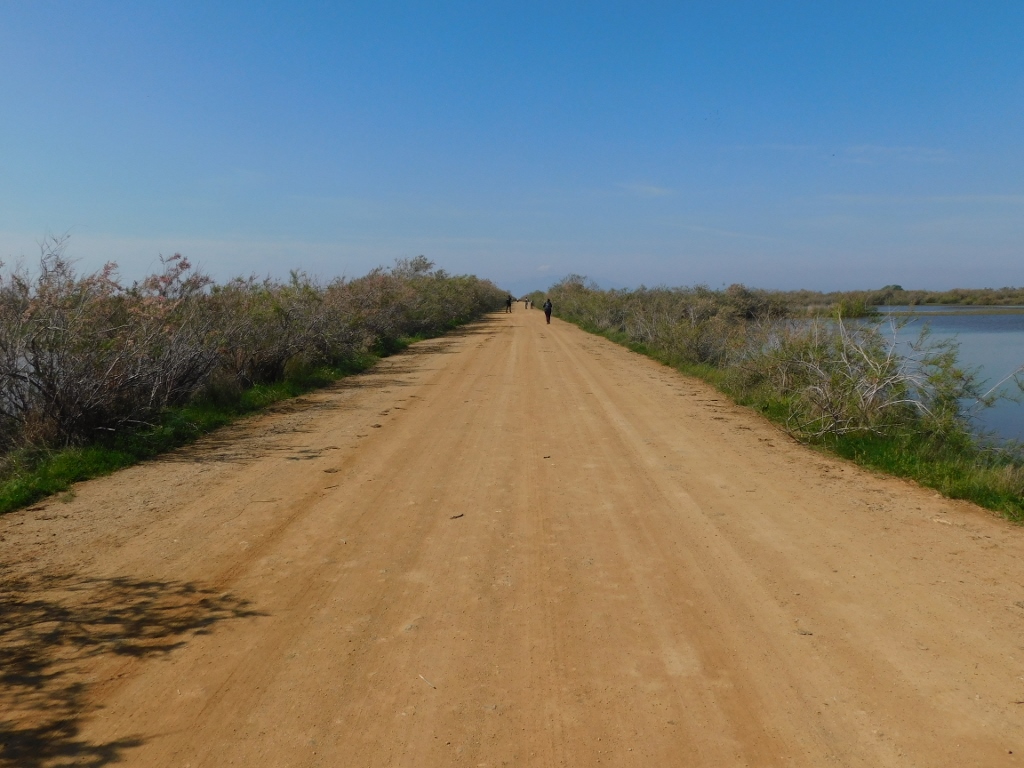 The Evros Delta, a detail
The Evros Delta, a detail
To the left and right from us there were different parts of the delta – some contained larger bodies of water, some smaller ones.
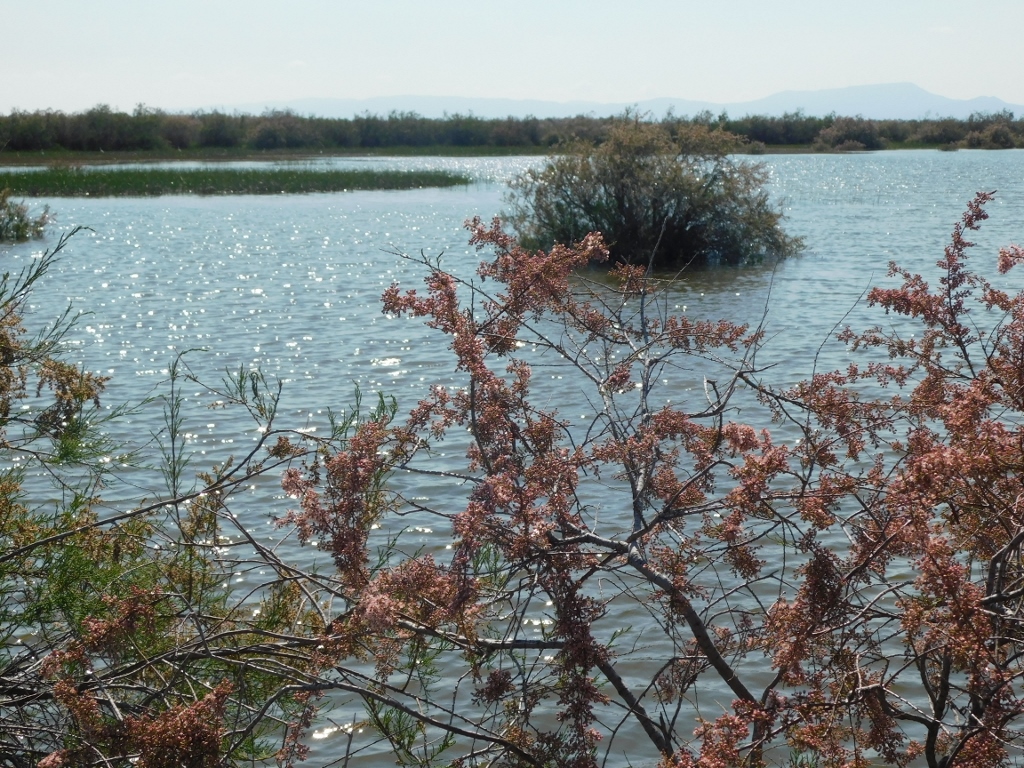 The Evros Delta, a detail
The Evros Delta, a detail
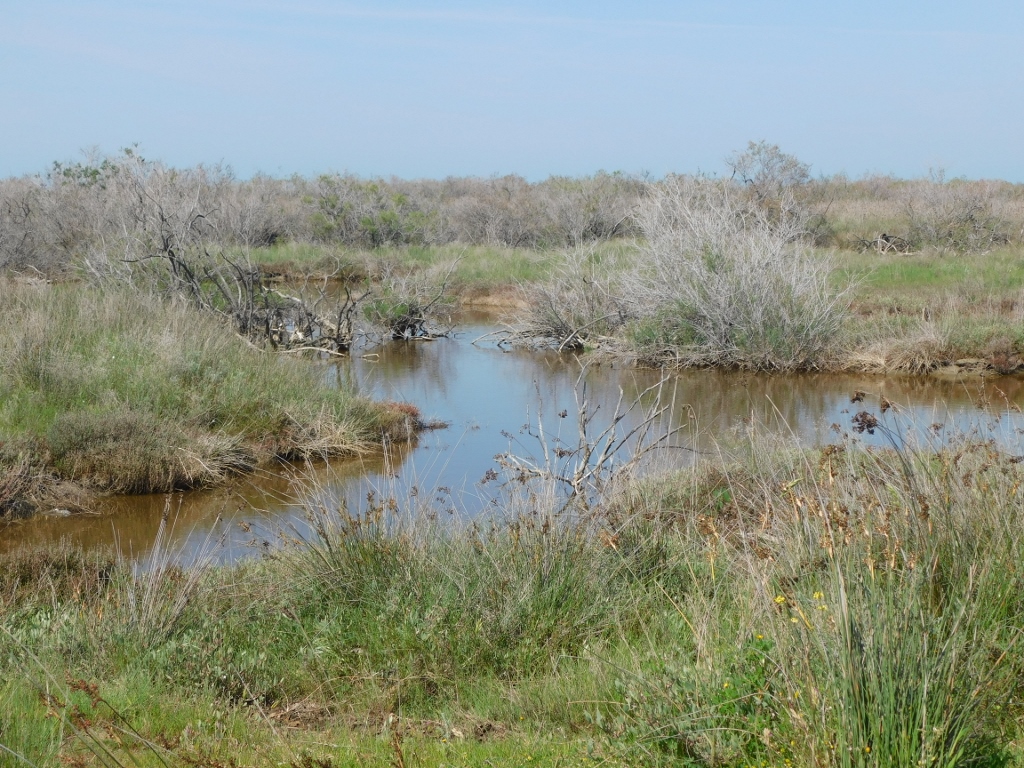 The Evros Delta, a detail
The Evros Delta, a detail
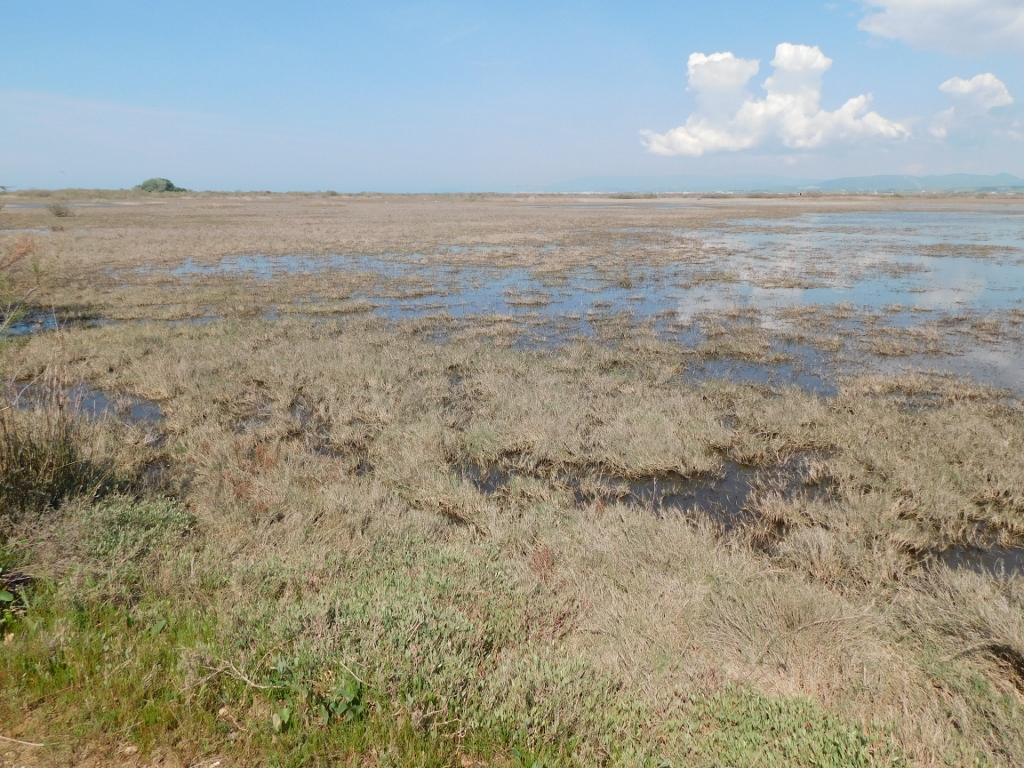 The Evros Delta, a detail
The Evros Delta, a detail
As for the birds, apart from some smaller species that I could glance at briefly or could hear chirping away as they hid in the low trees or shrubs, I managed to take a photo only of a couple of little egrets (Egretta garzetta) that I could see in the distance.
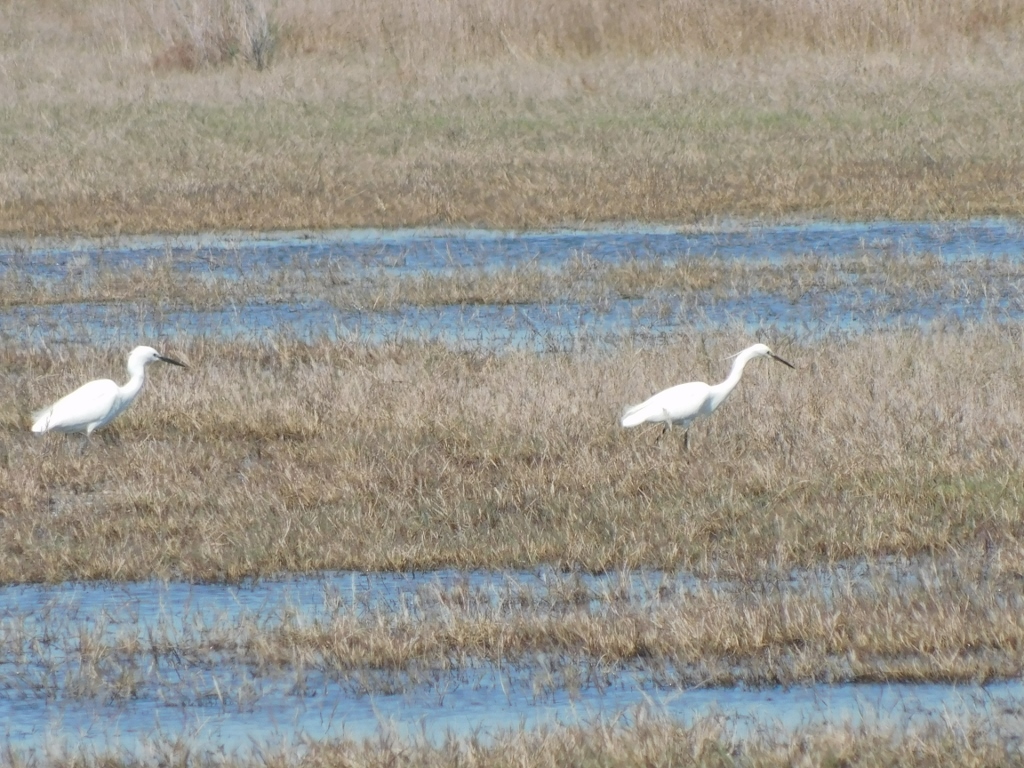 Little egrets
Little egrets
And, as far as the road was concerned, we encountered some very diverse visitors to the delta.
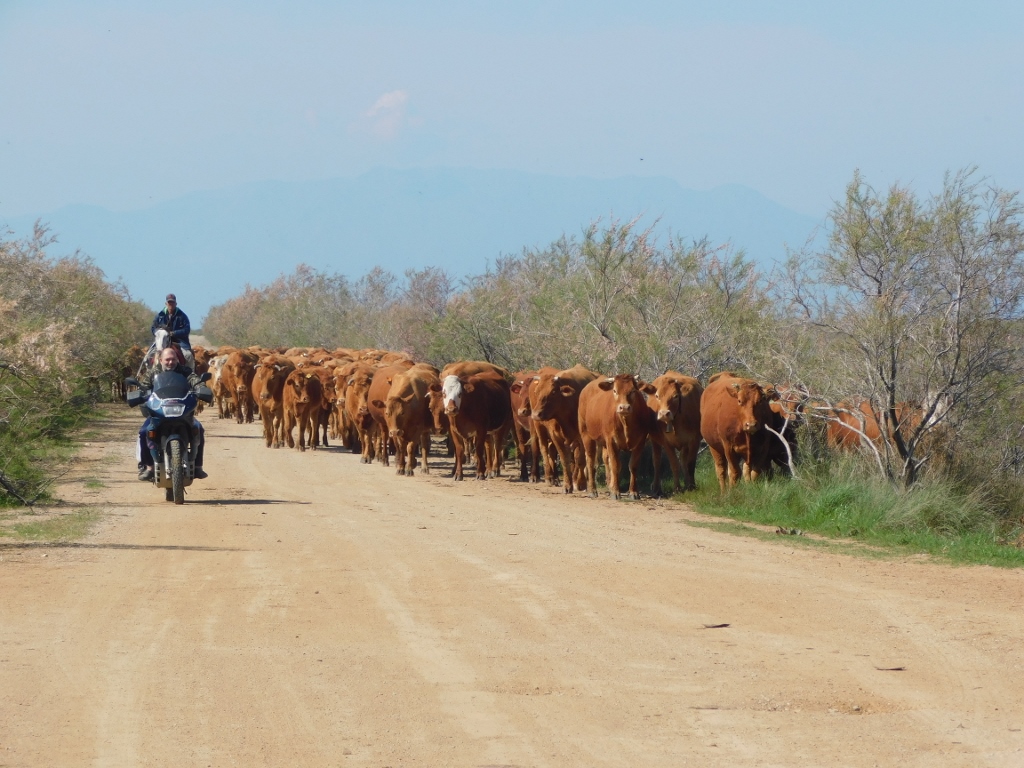 The Evros Delta, a detail
The Evros Delta, a detail
At some point, I saw in the sky in front of me a large flock of birds that was slowly circling higher up. As I was told later on, this was a flock of pelicans. Here, in the Evros Delta, it is possible to find two pelican species, but I’m not sure which one this was.
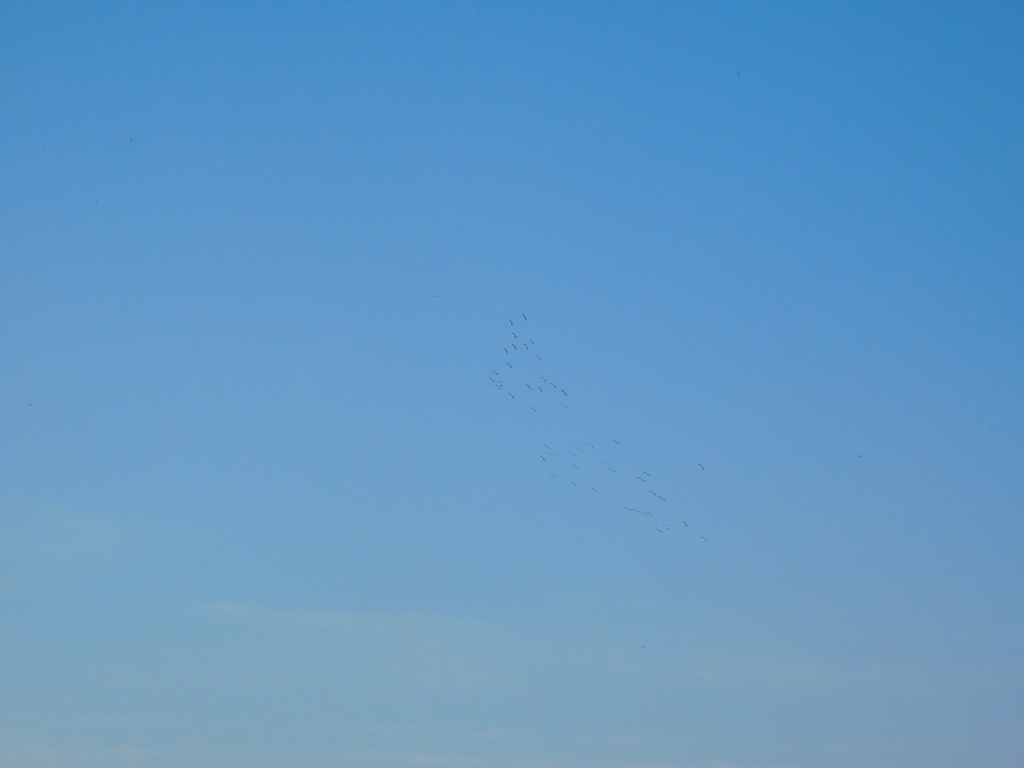 A flock of pelicans in the sky above the Evros Delta
A flock of pelicans in the sky above the Evros Delta
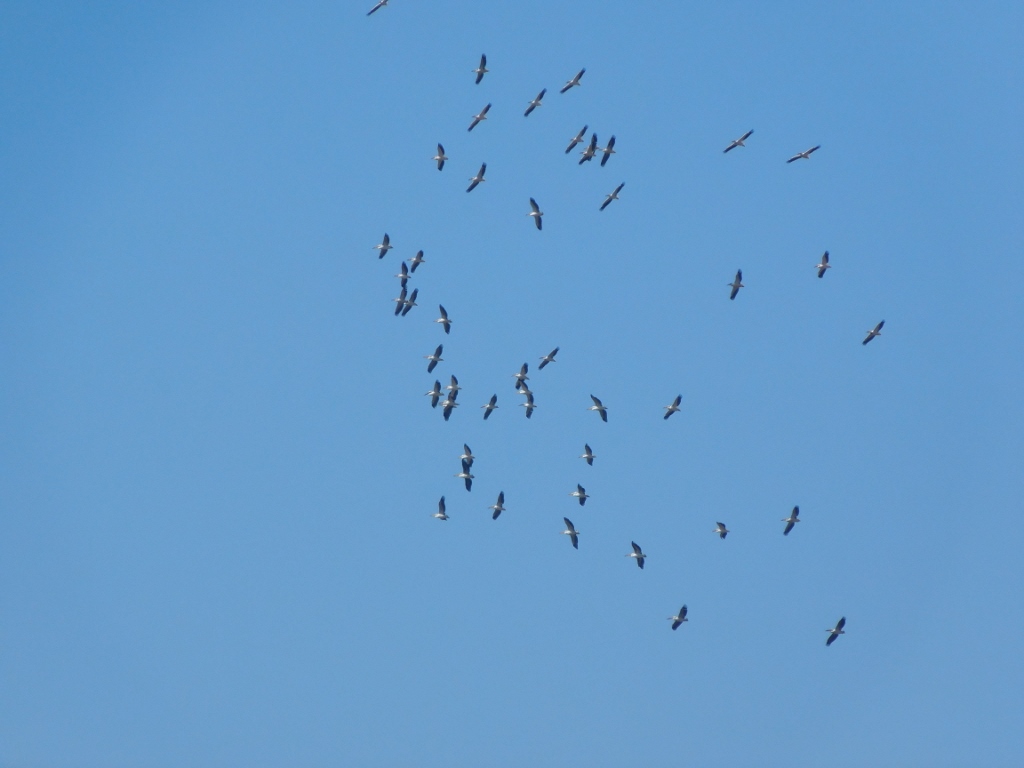 A flock of pelicans in the sky above the Evros Delta
A flock of pelicans in the sky above the Evros Delta
Apart from the birds, I also found the whole landscape we were walking through quite fascinating, as well as the road itself.
 The road I’m leaving behind
The road I’m leaving behind
 The road in front of me
The road in front of me
At some point, the road comes to its end and this is the very shore of the Thracian Sea which is a part of the Aegean Sea and is named after the historic and geographical region in the far southeast of the Balkan Peninsula.
 Agios Sotiras Beach on the shore of the Thracian Sea
Agios Sotiras Beach on the shore of the Thracian Sea
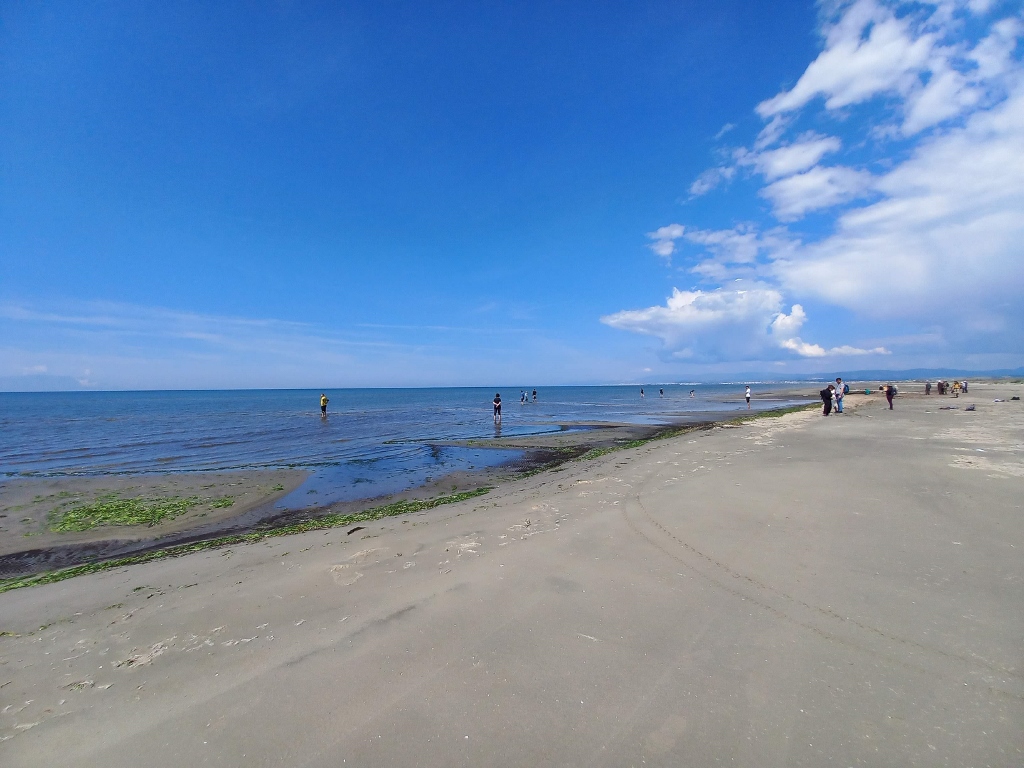 Agios Sotiras Beach on the shore of the Thracian Sea
Agios Sotiras Beach on the shore of the Thracian Sea
As for the birds, I did not see anything interesting any more, but the stroll did feel good. I walked and chatted with Sonja, as well as with Ljilja and Šemija on our way back. This was quite a nice morning and most enjoyable company.